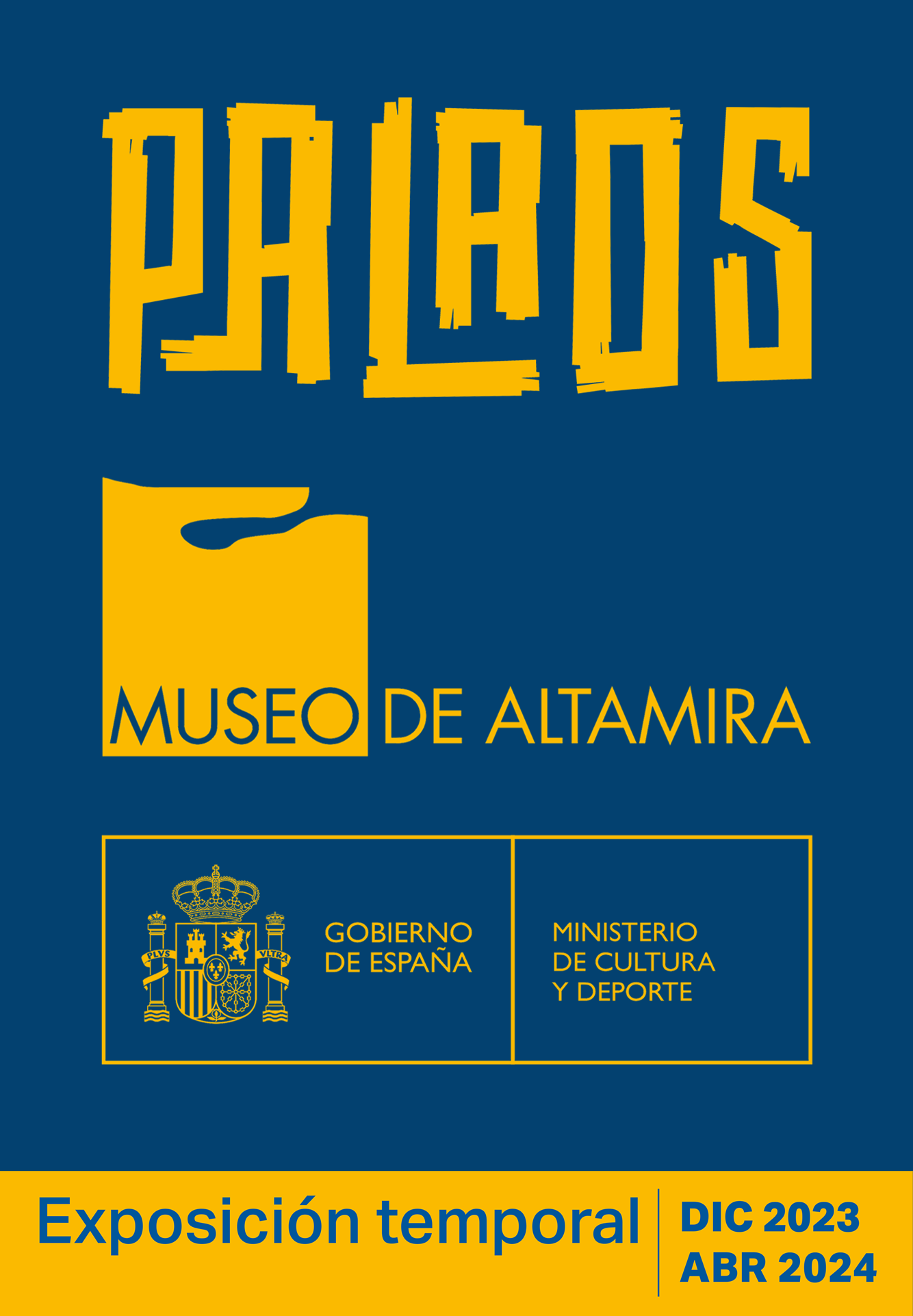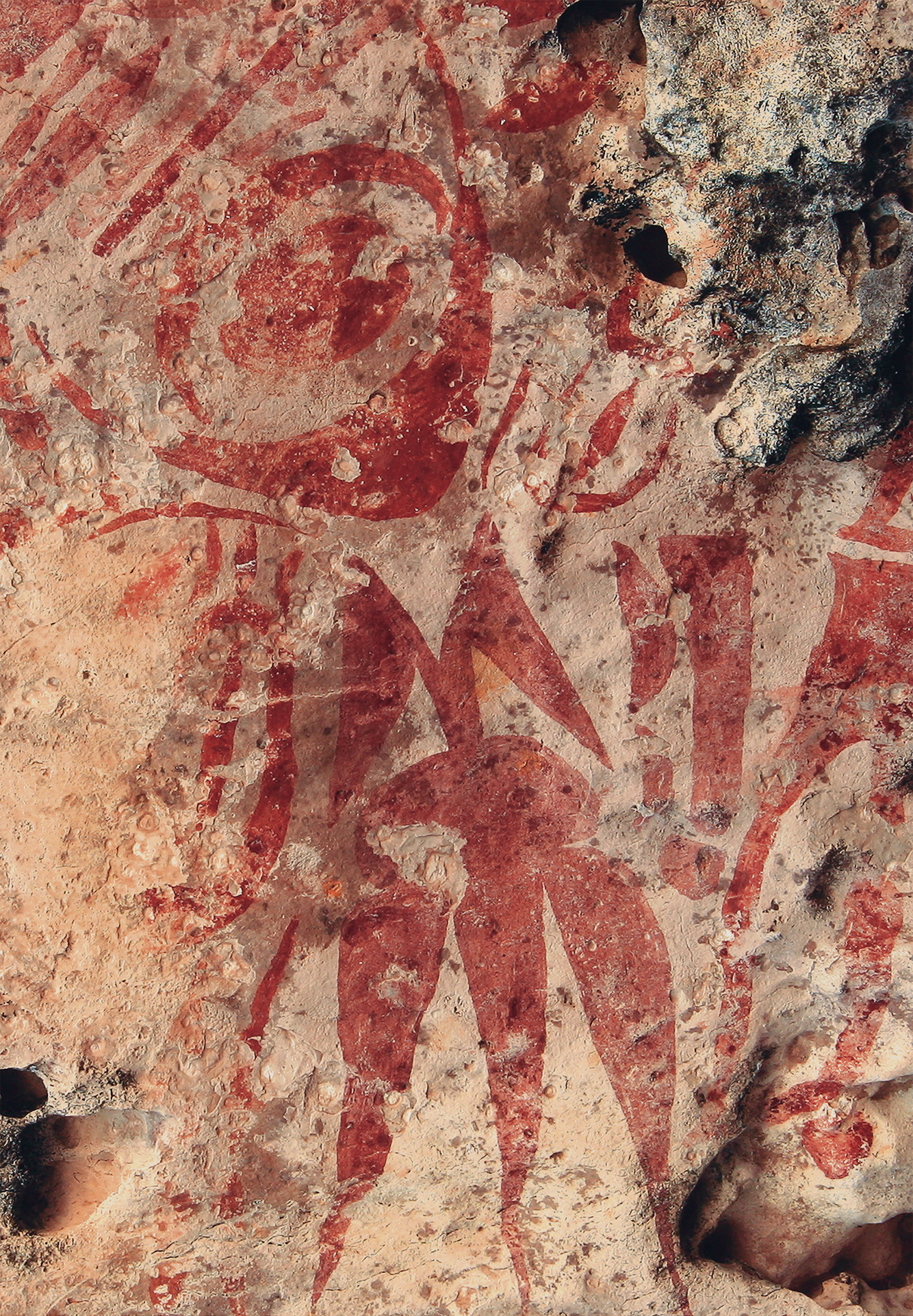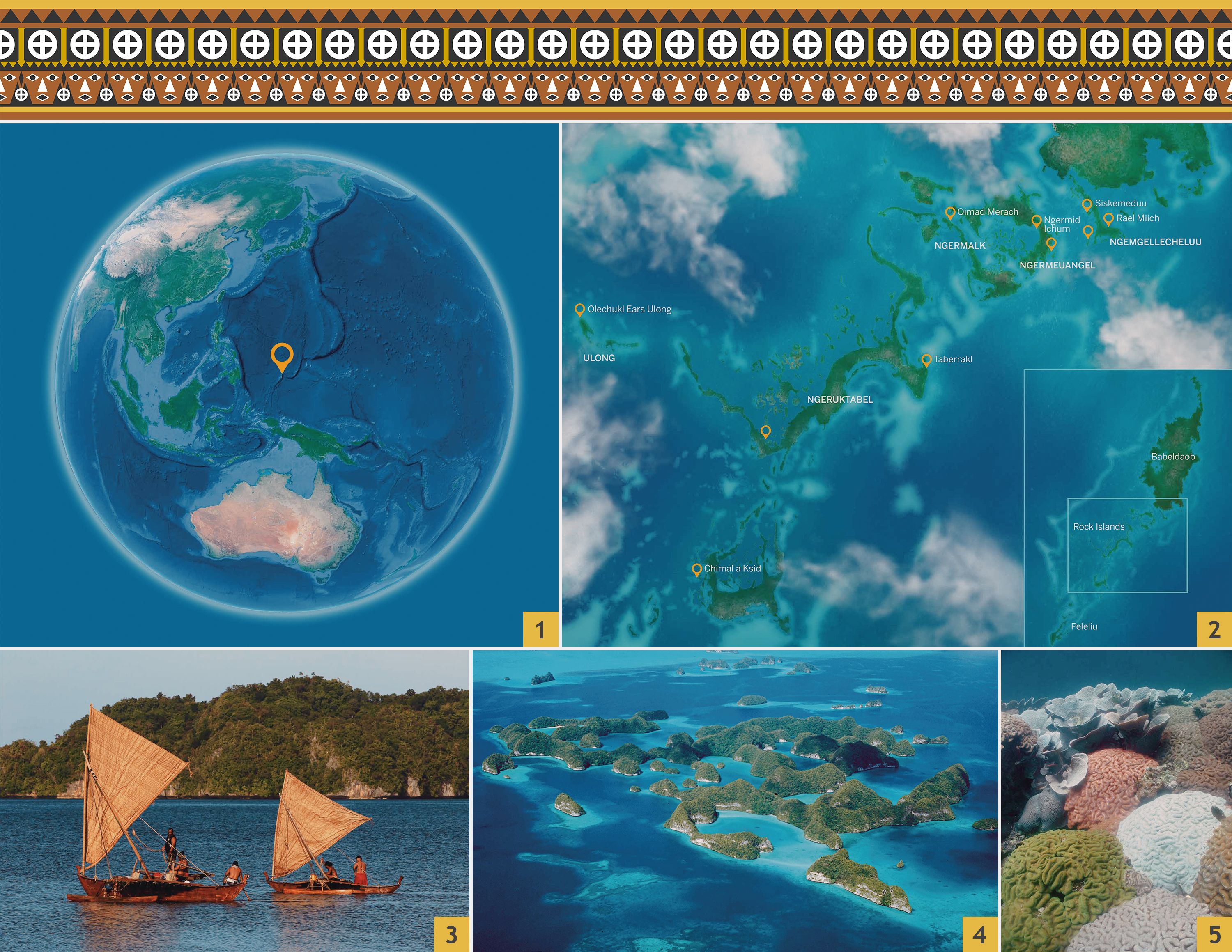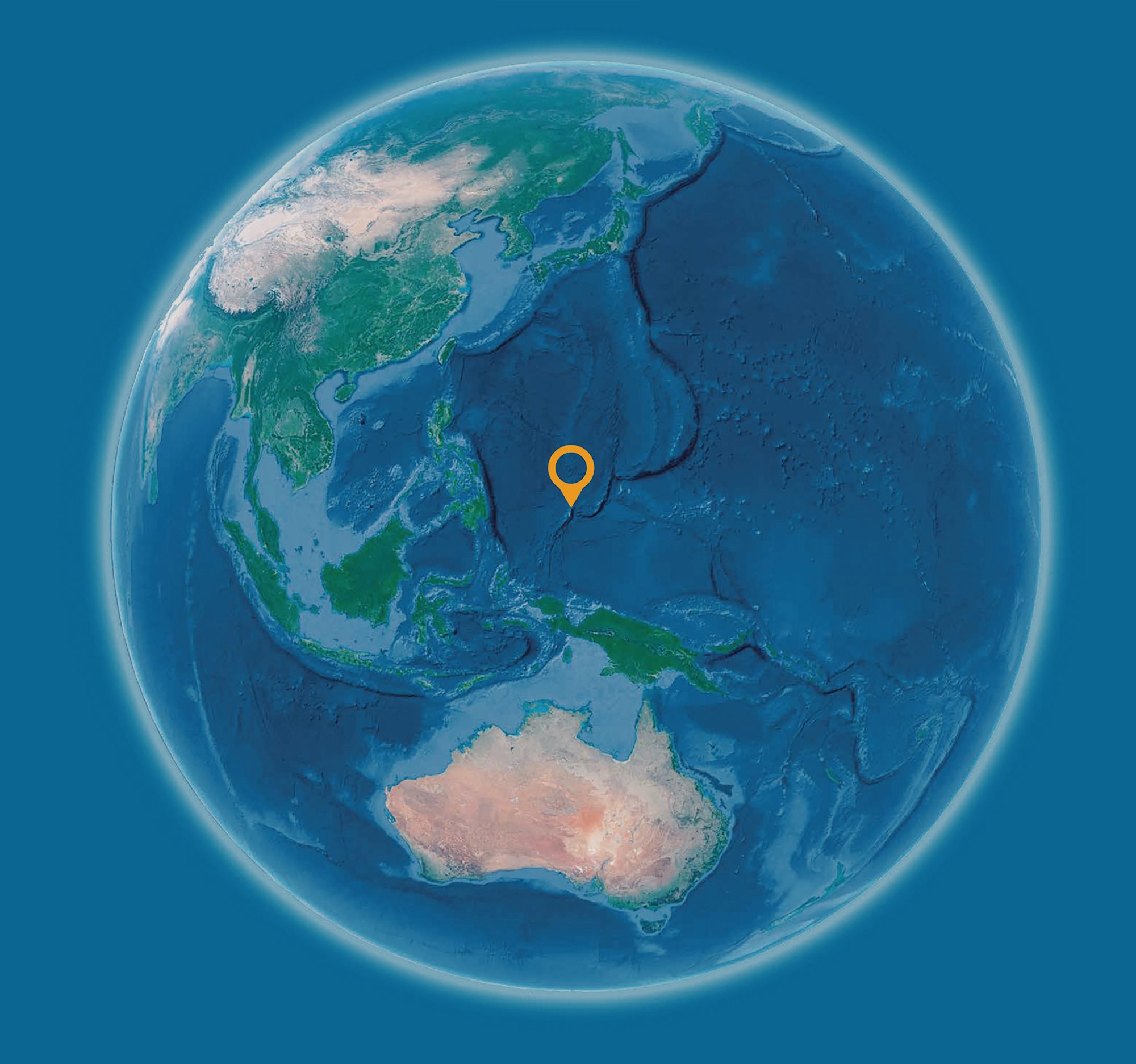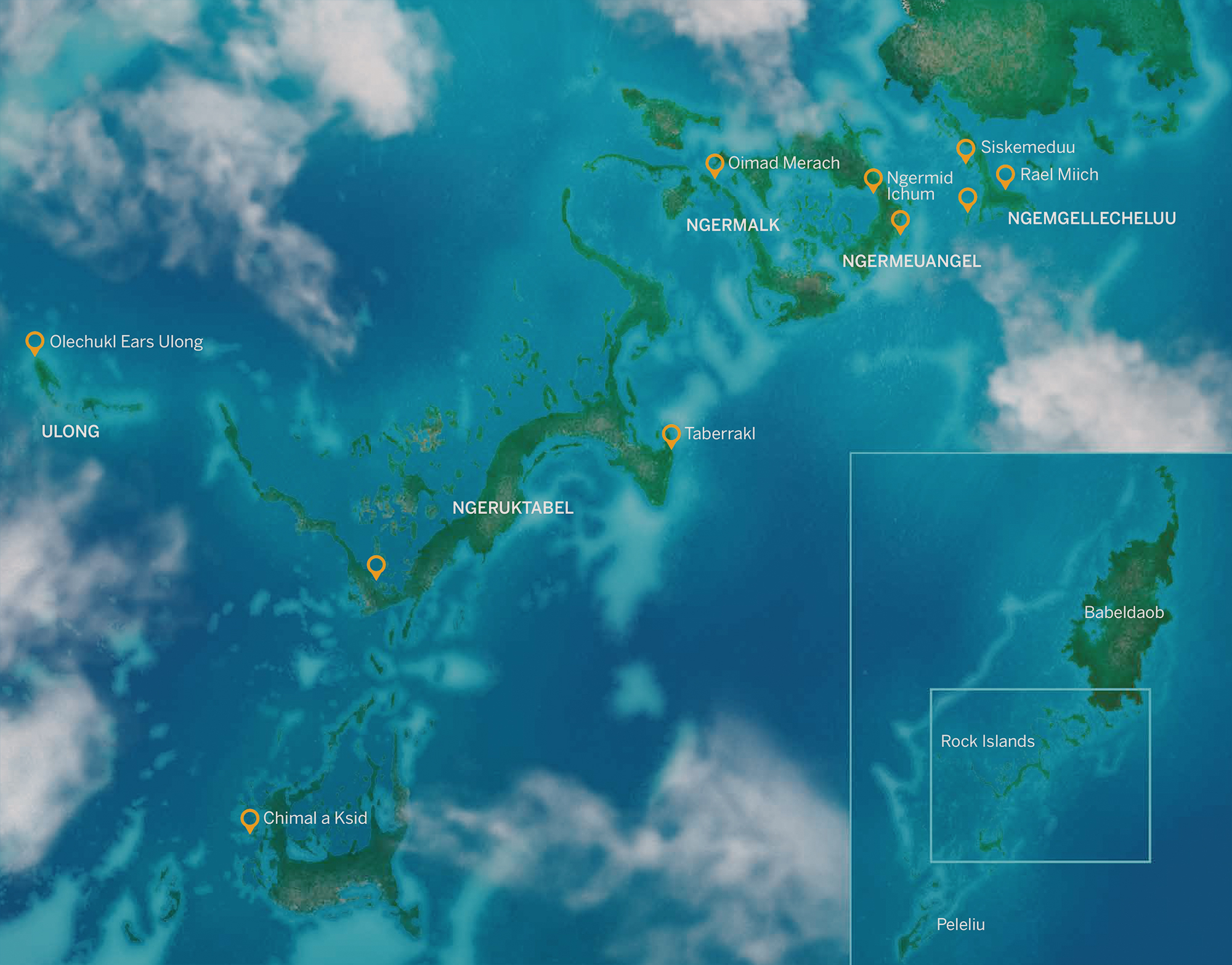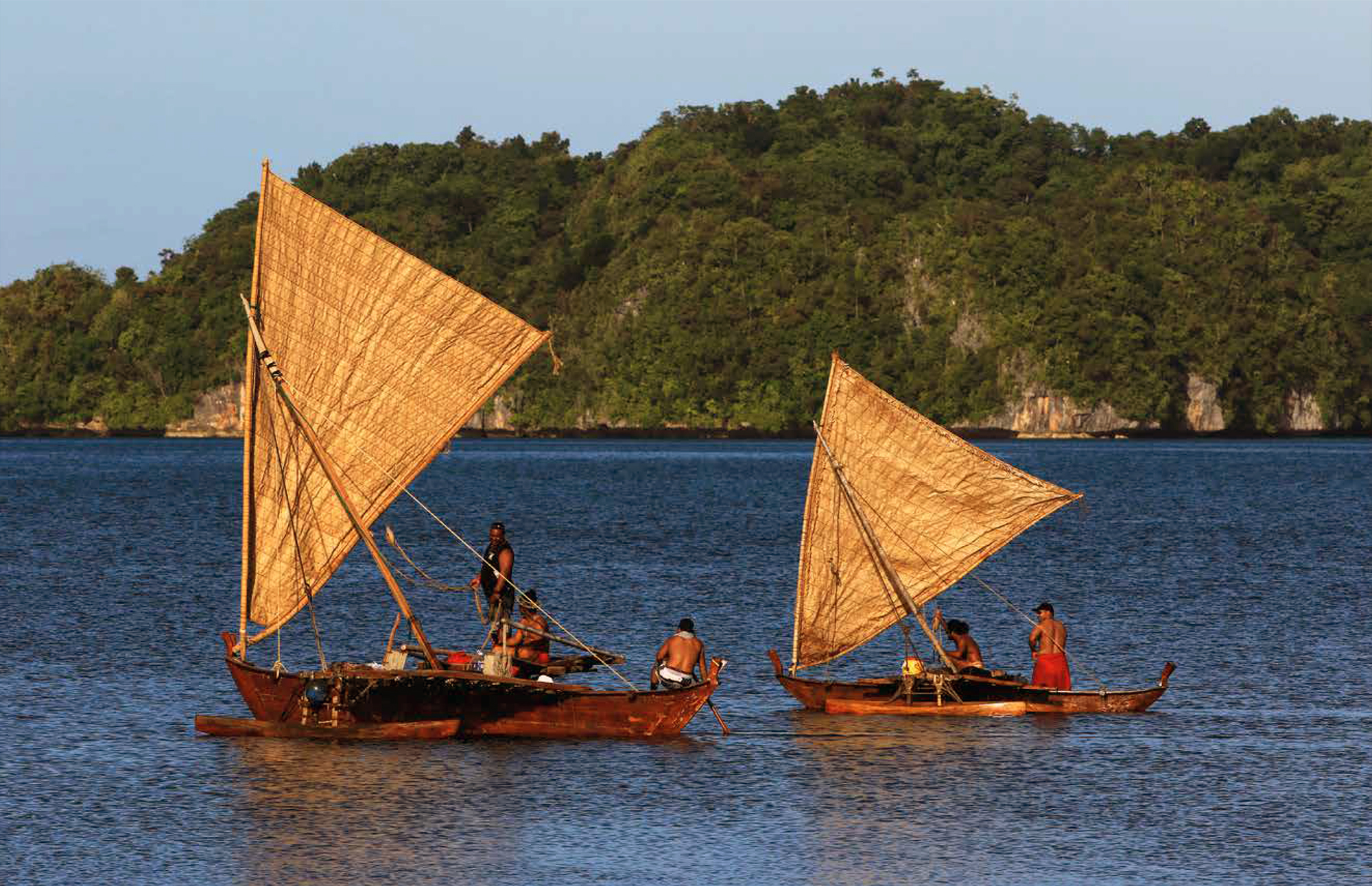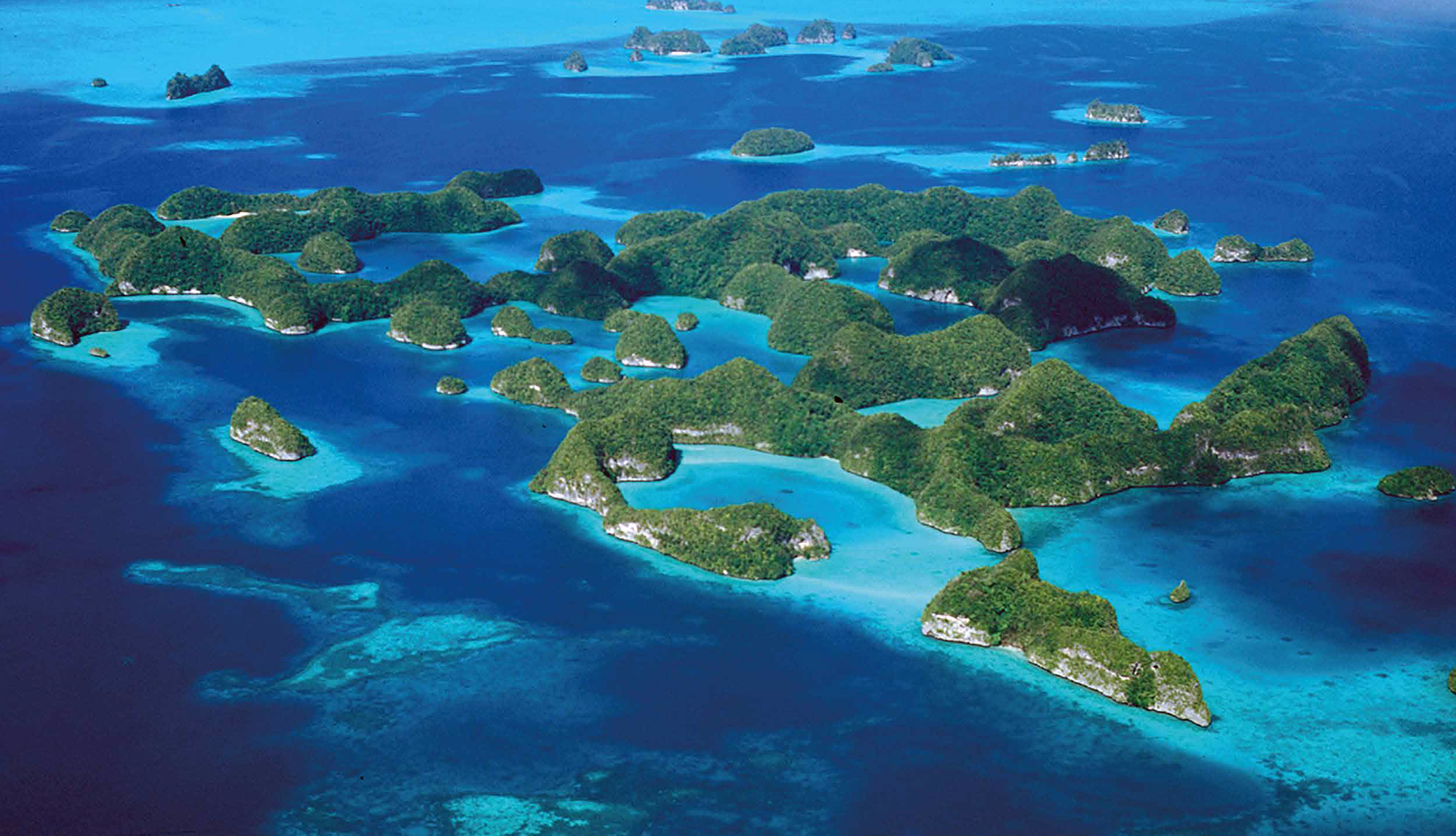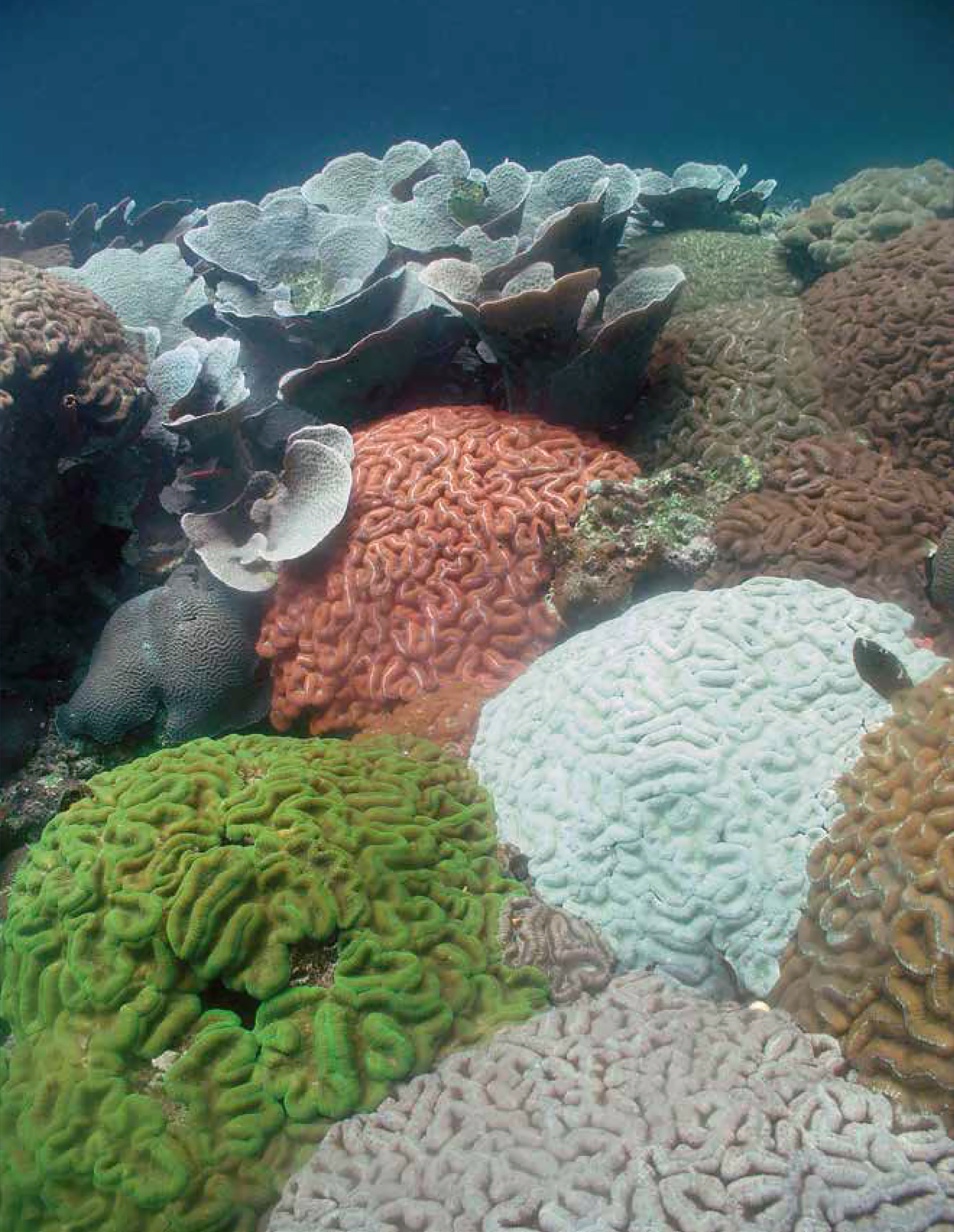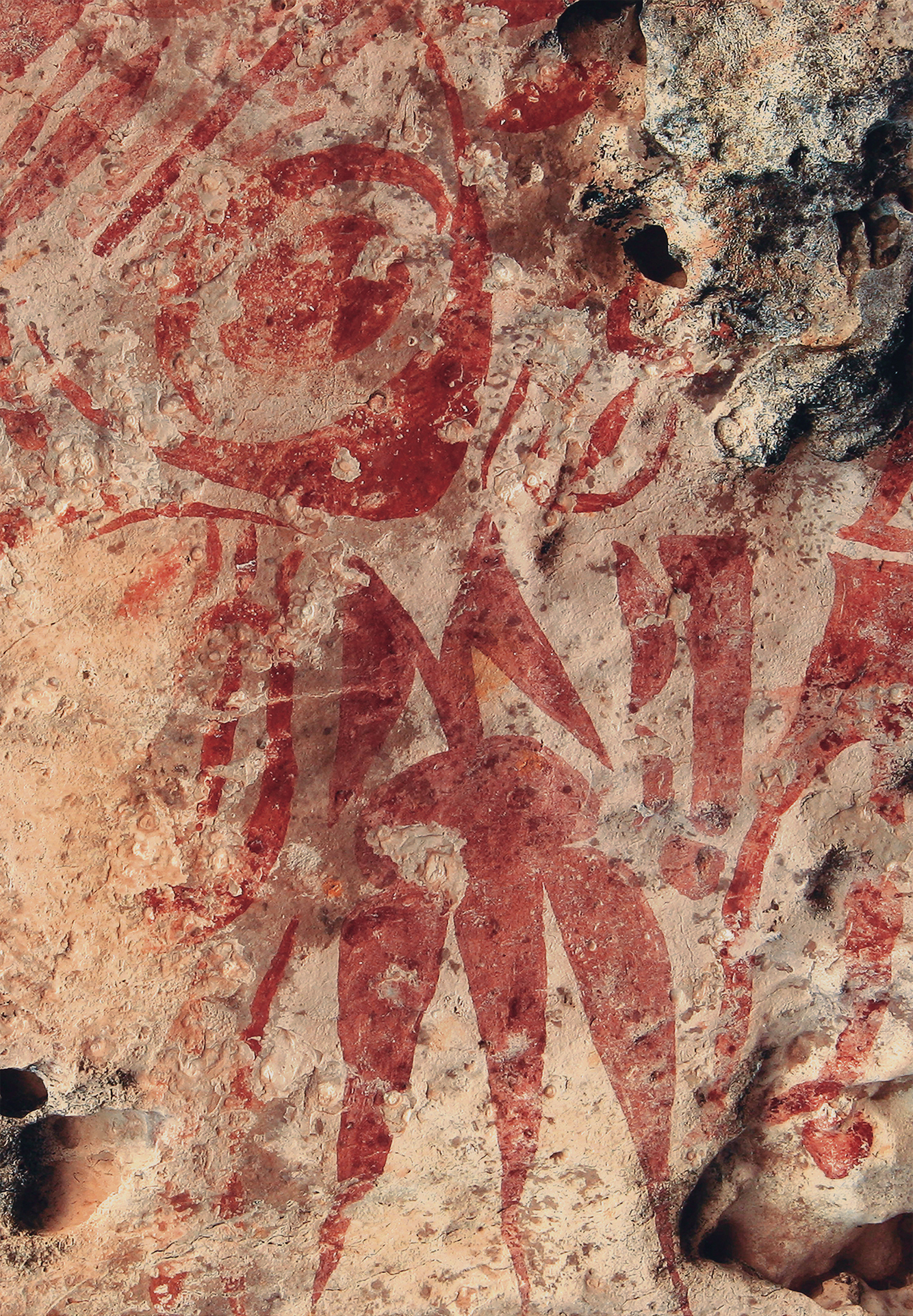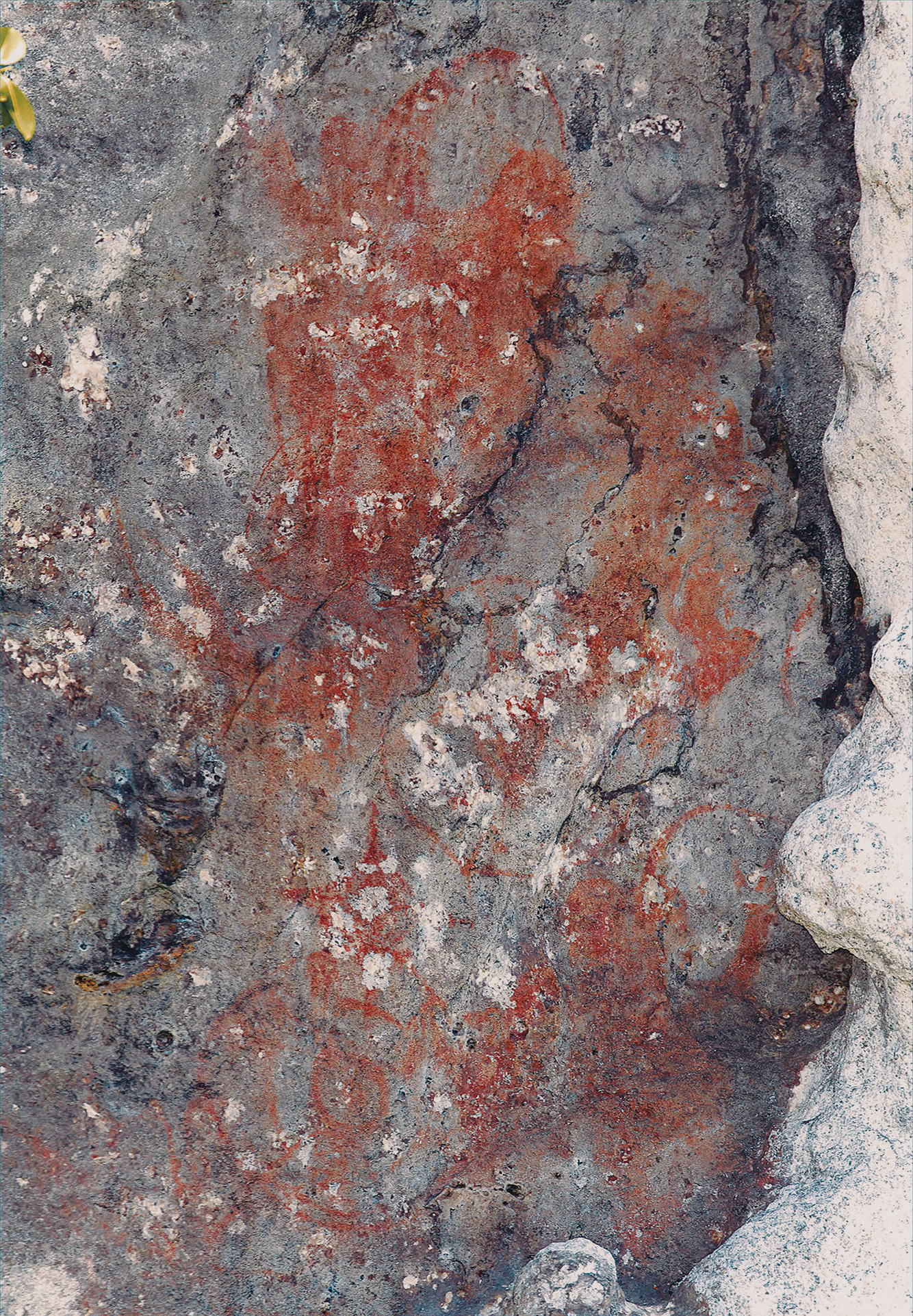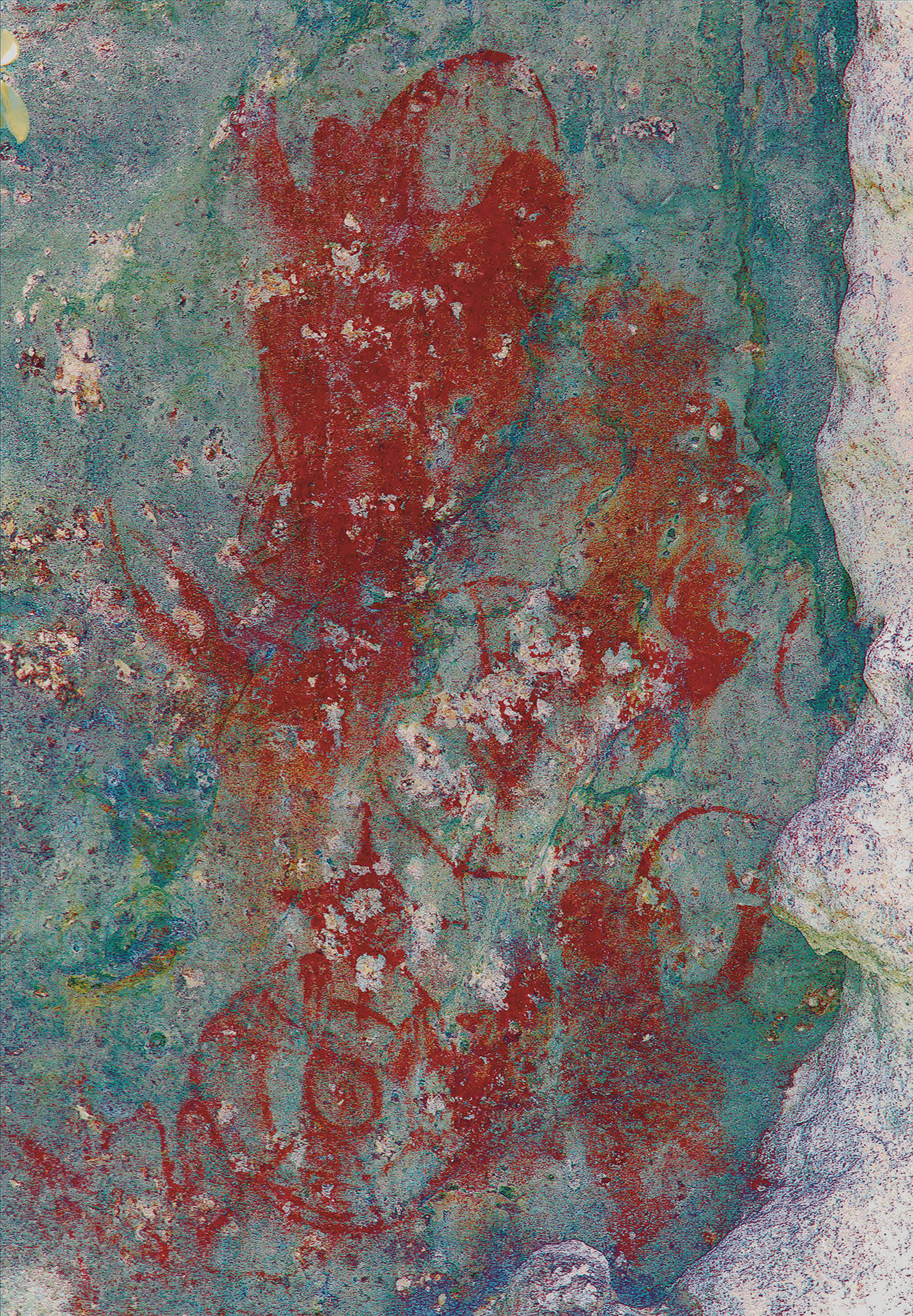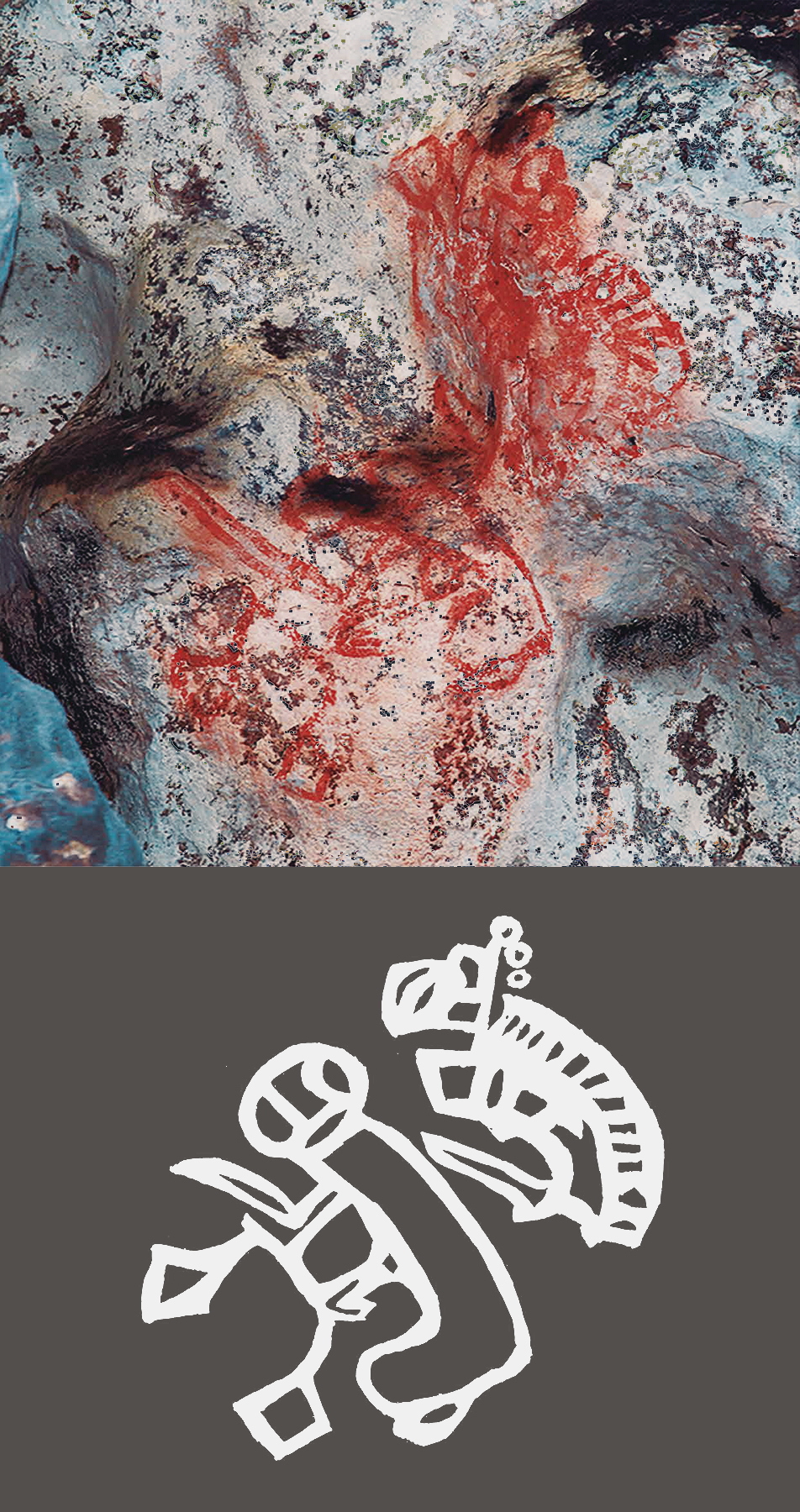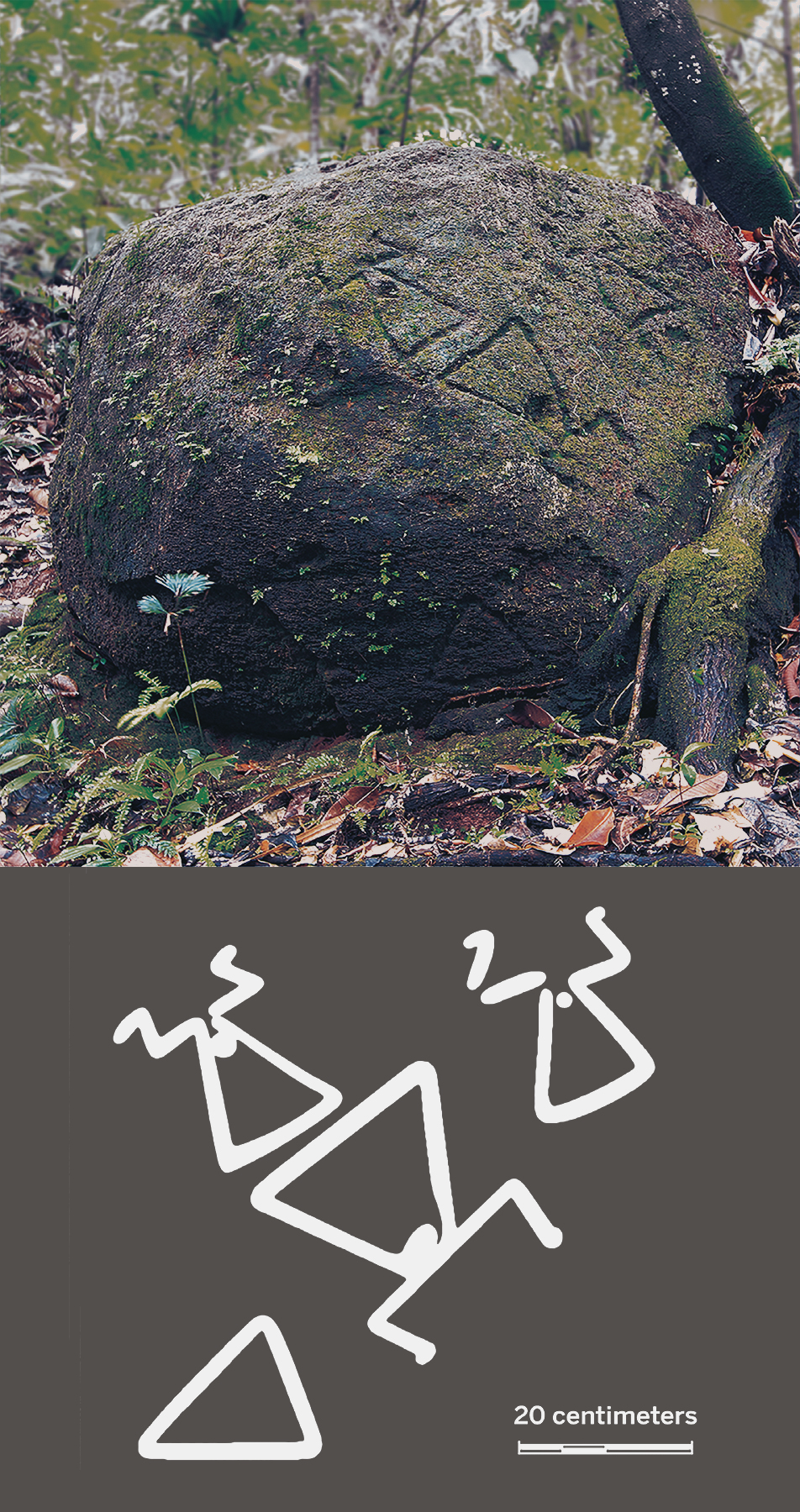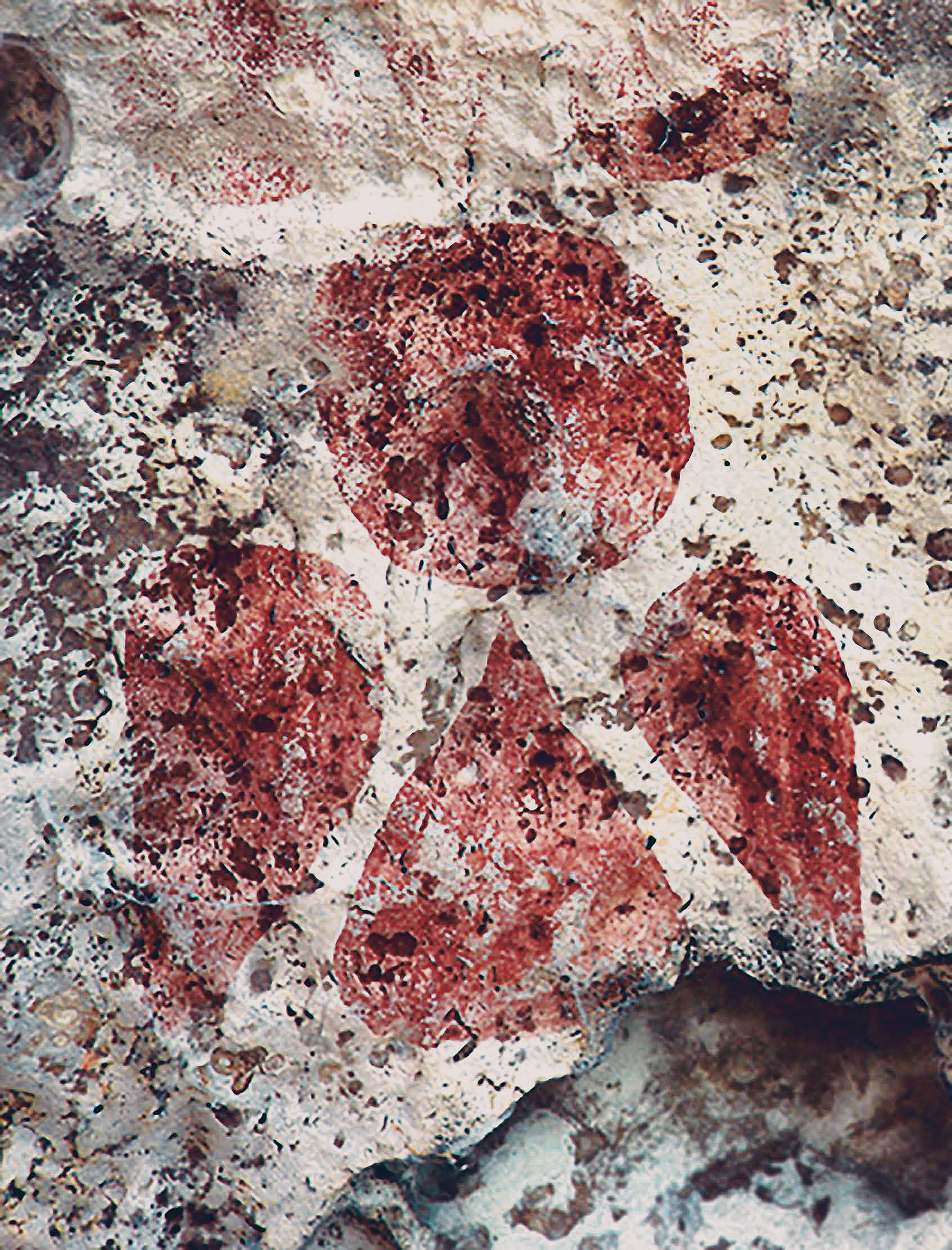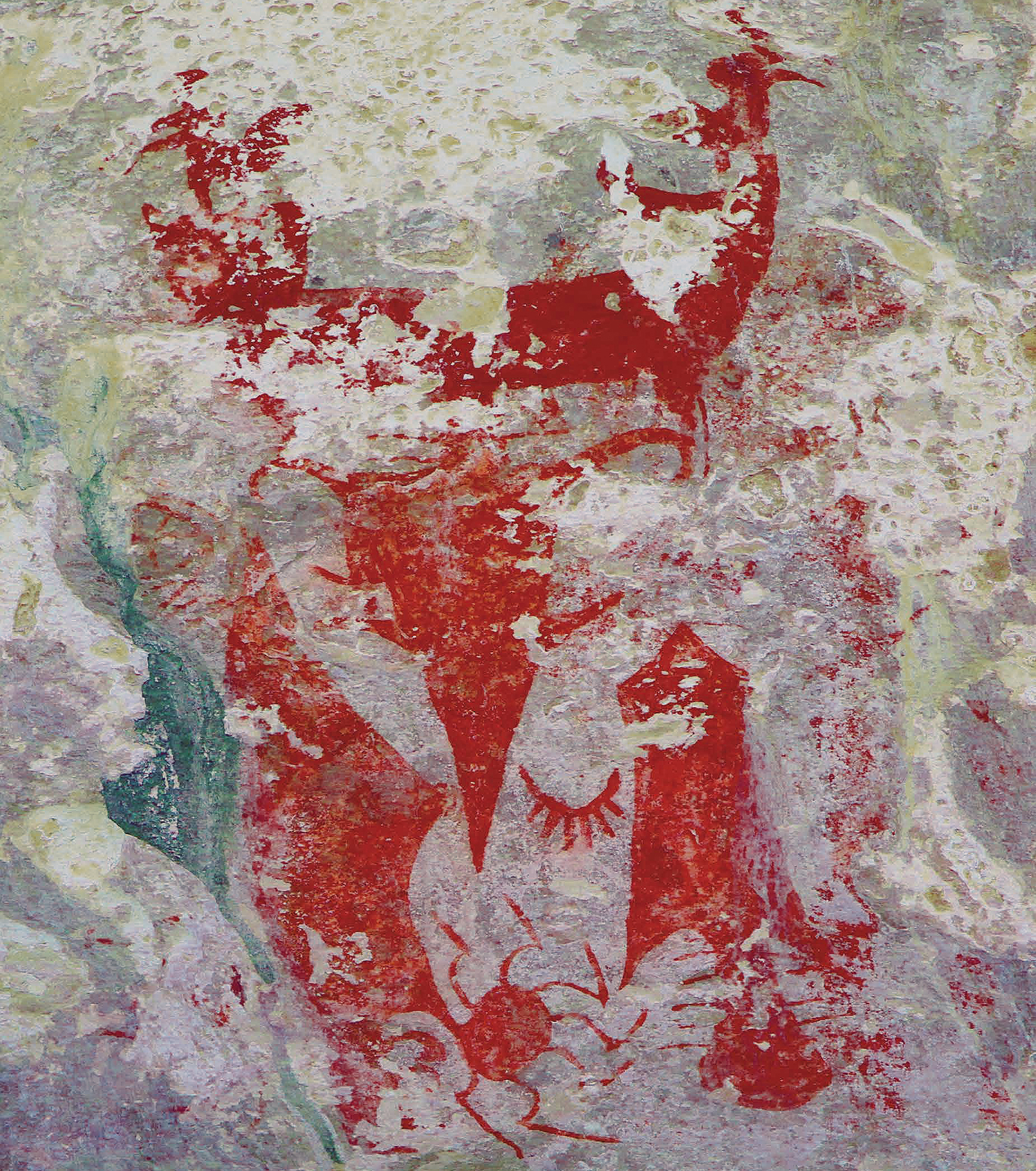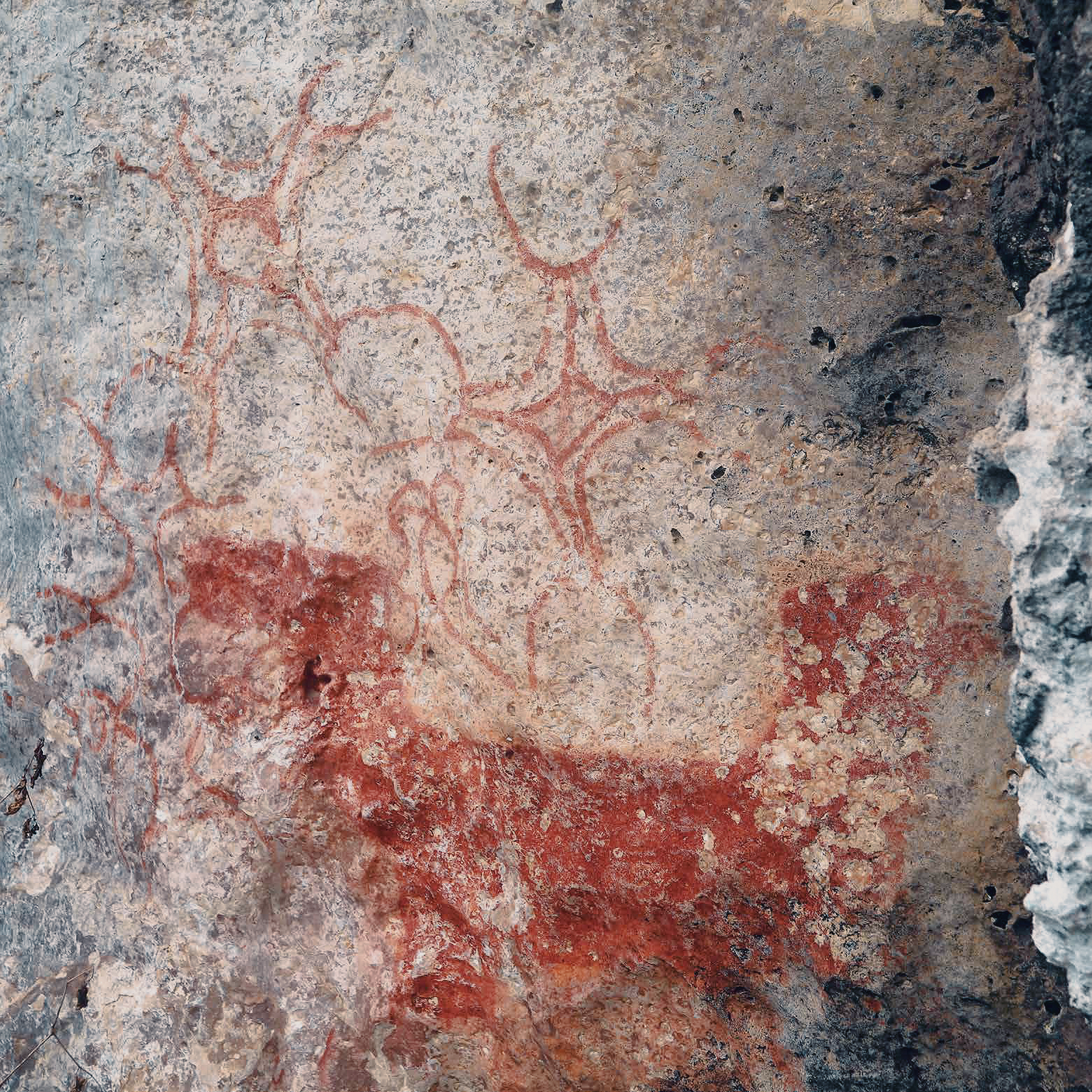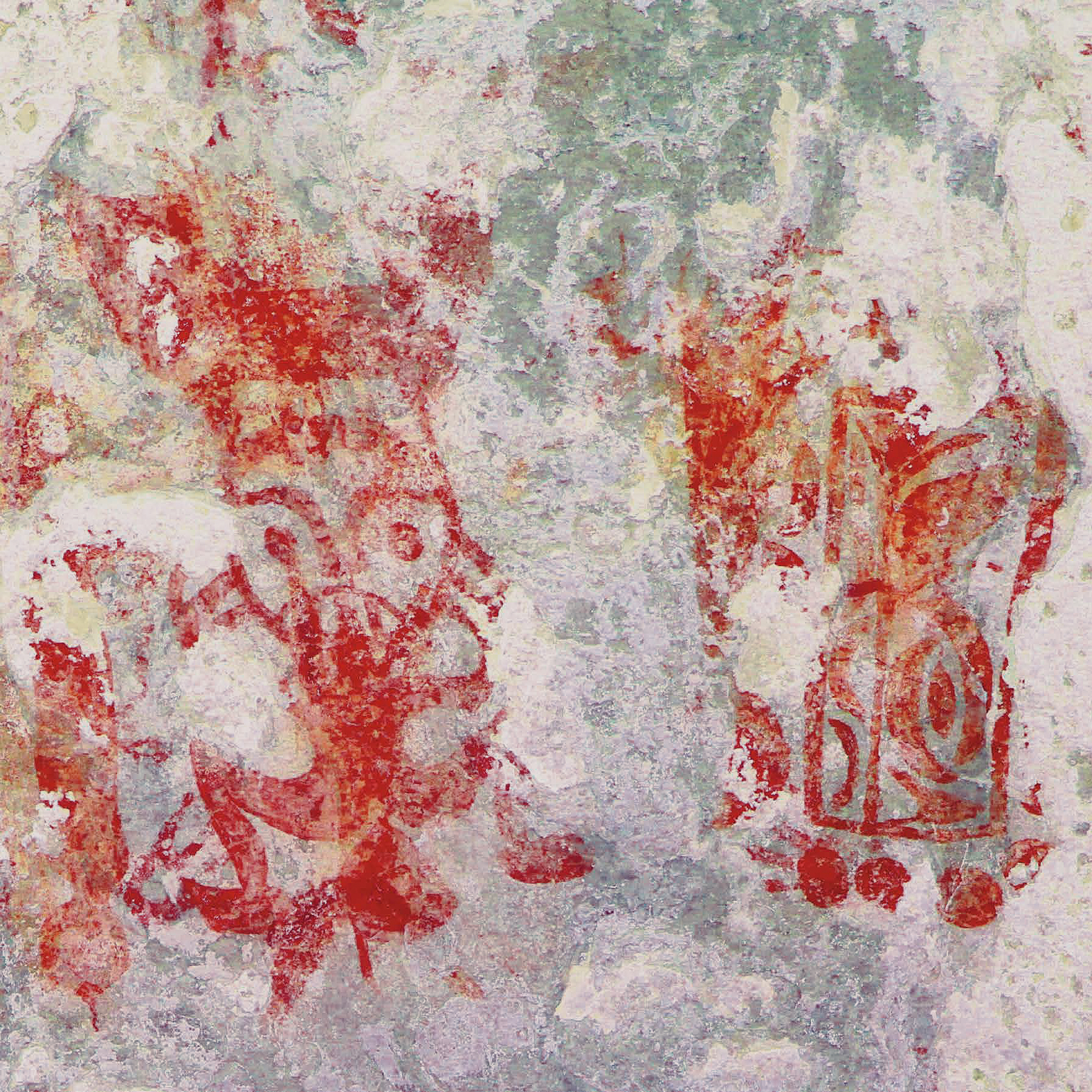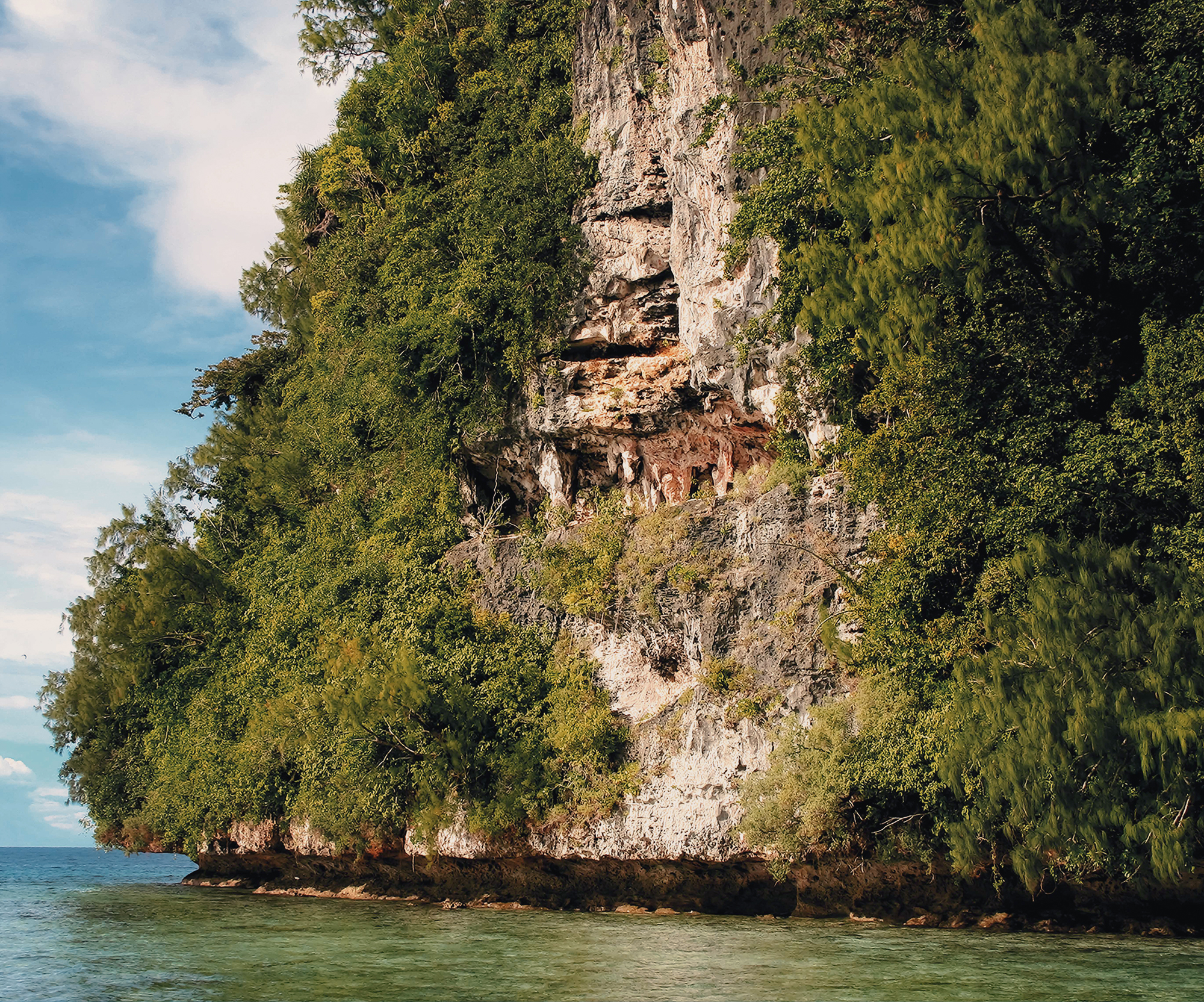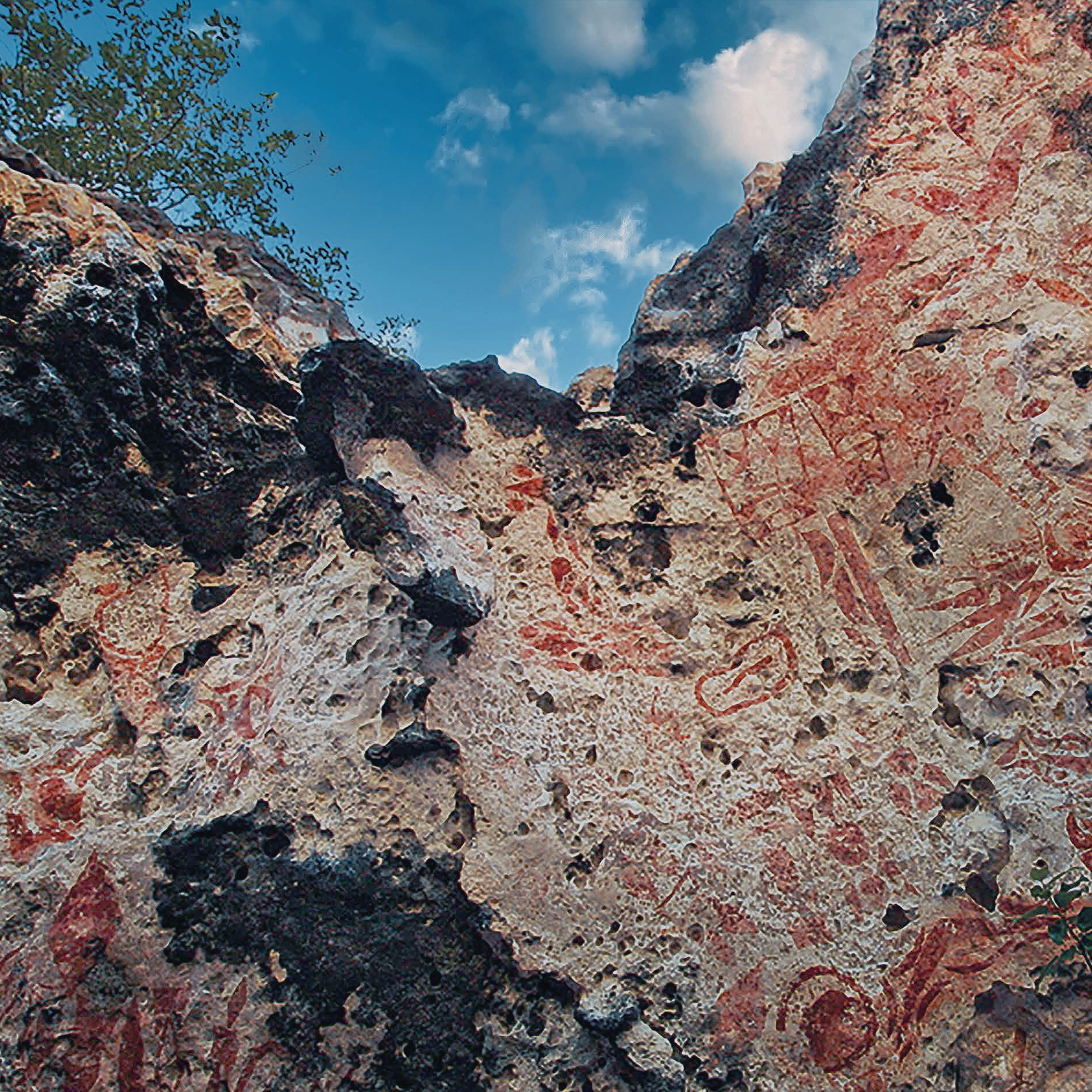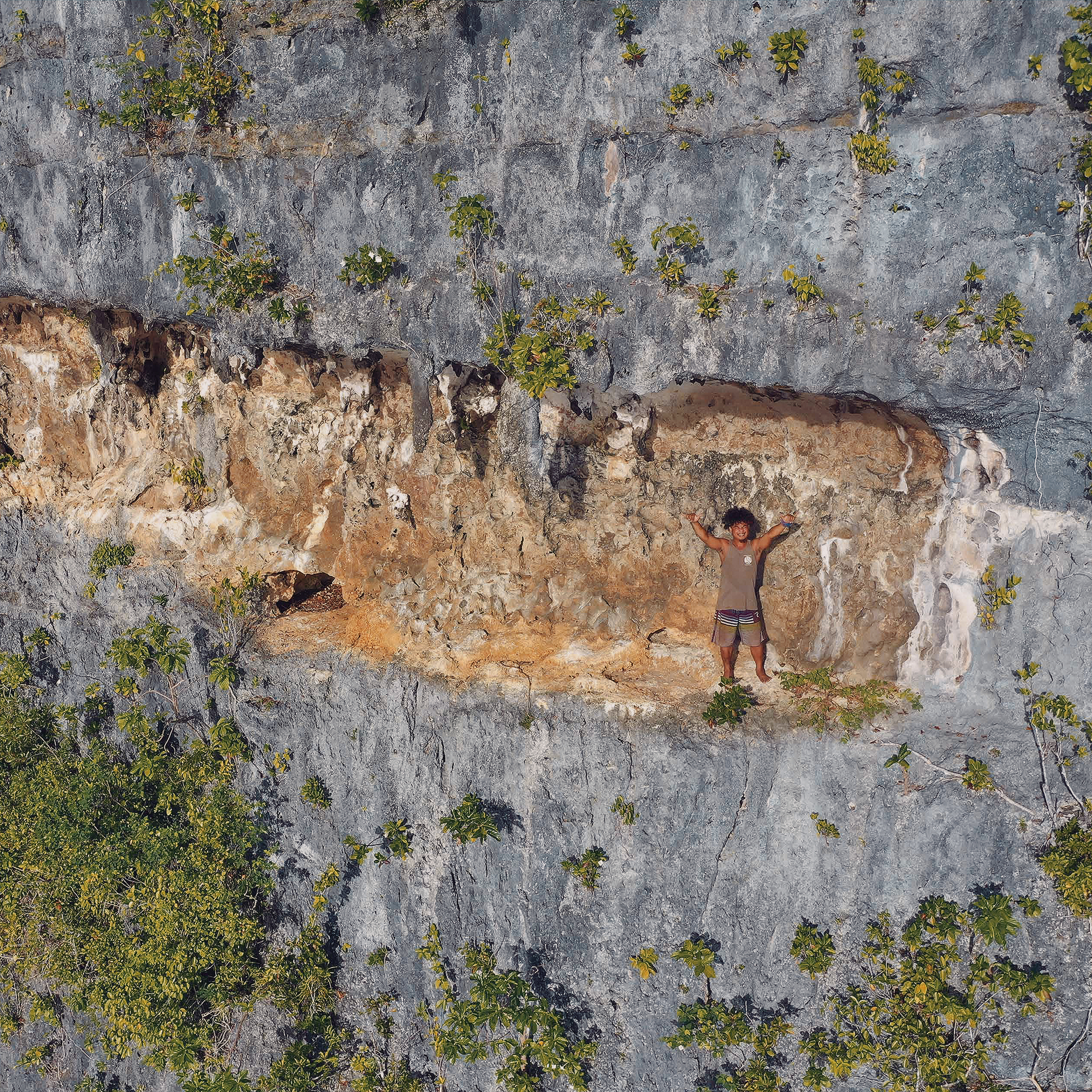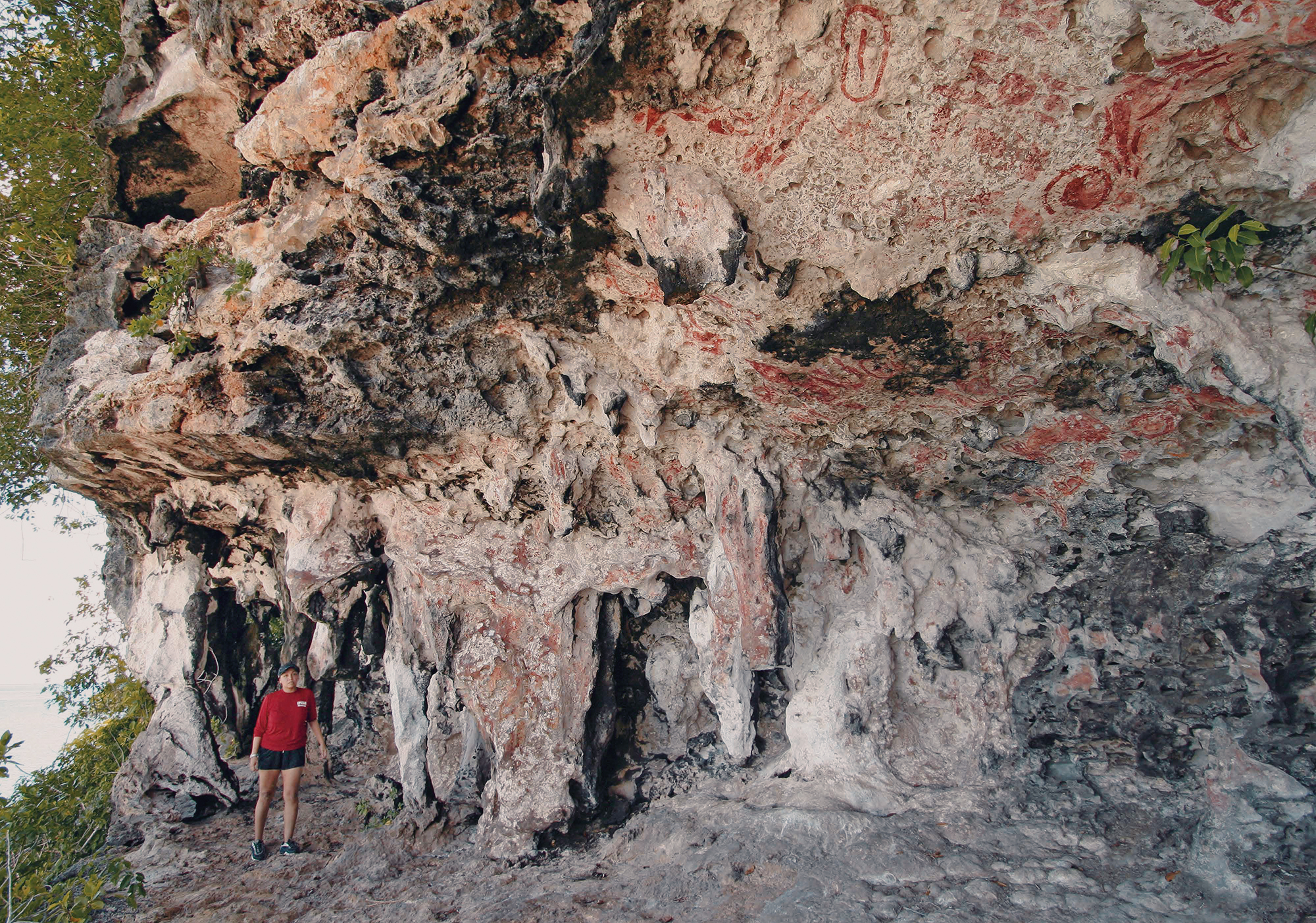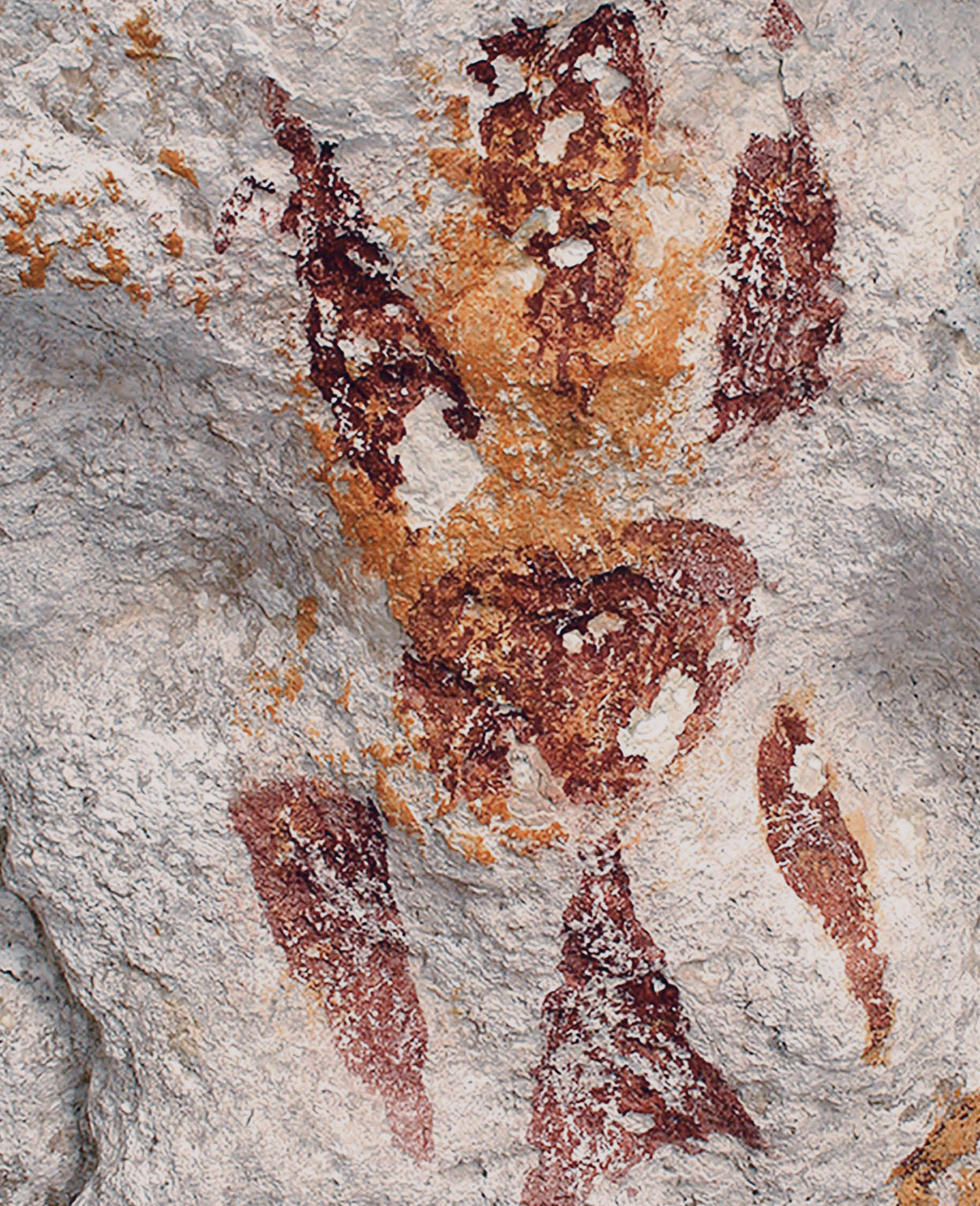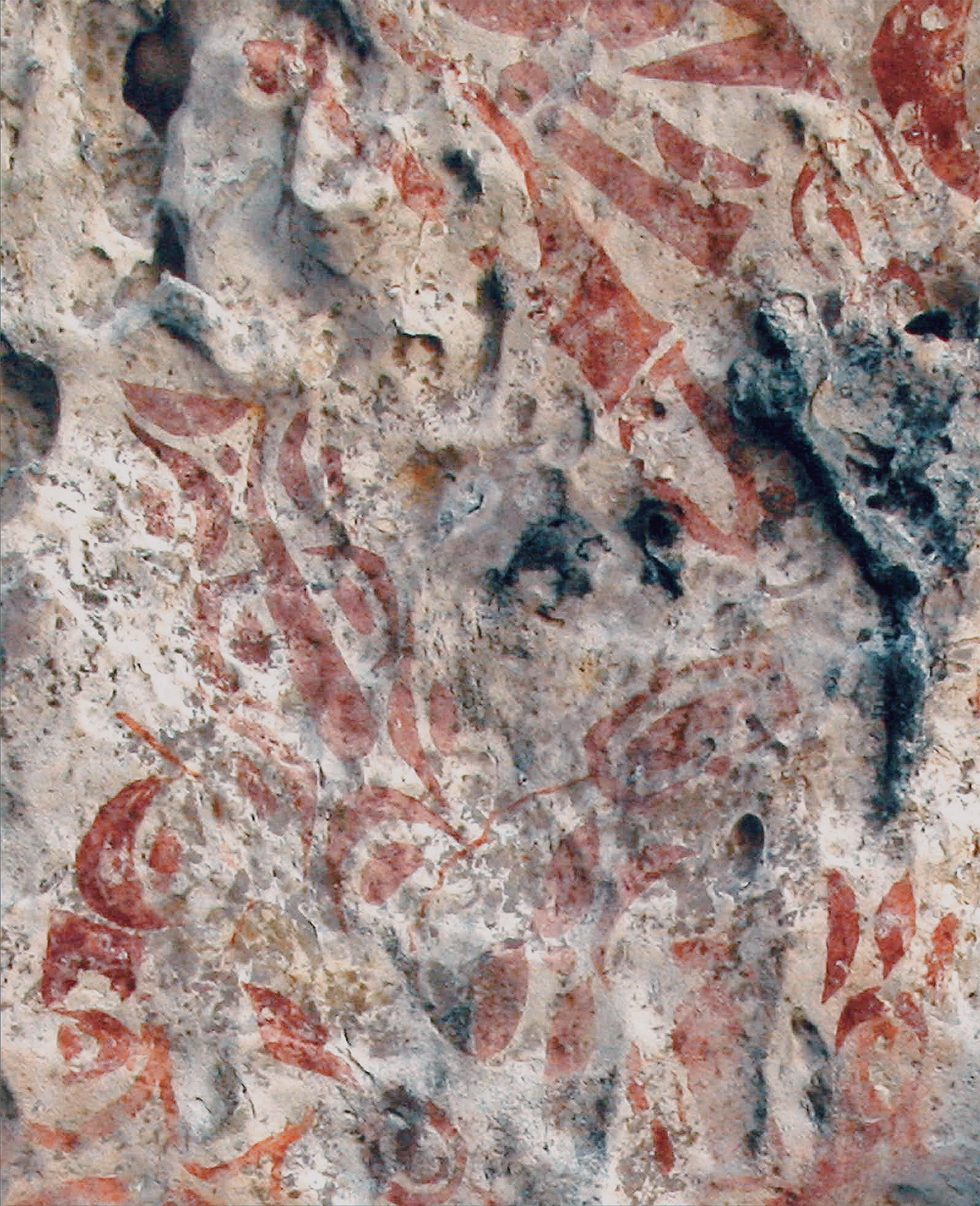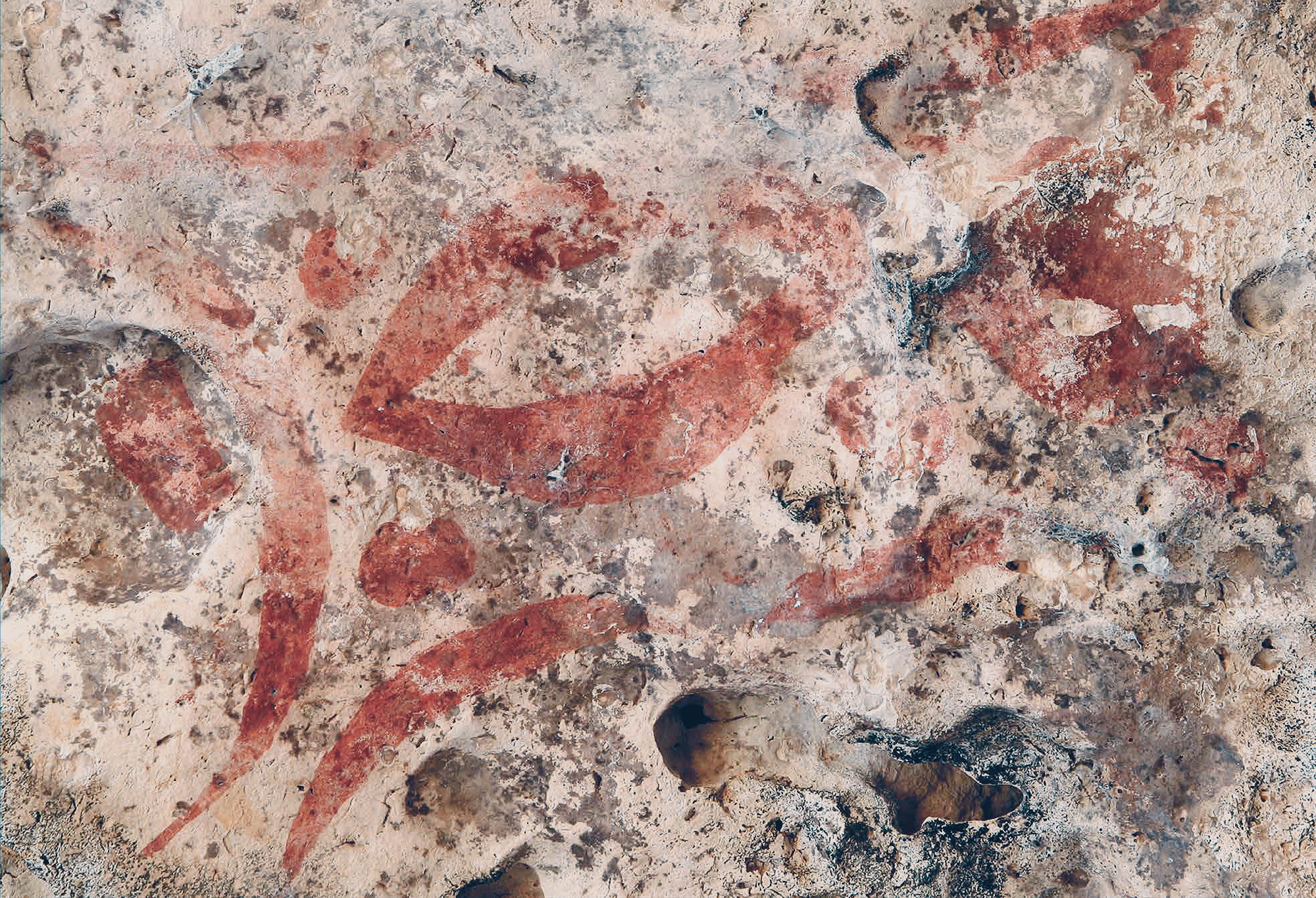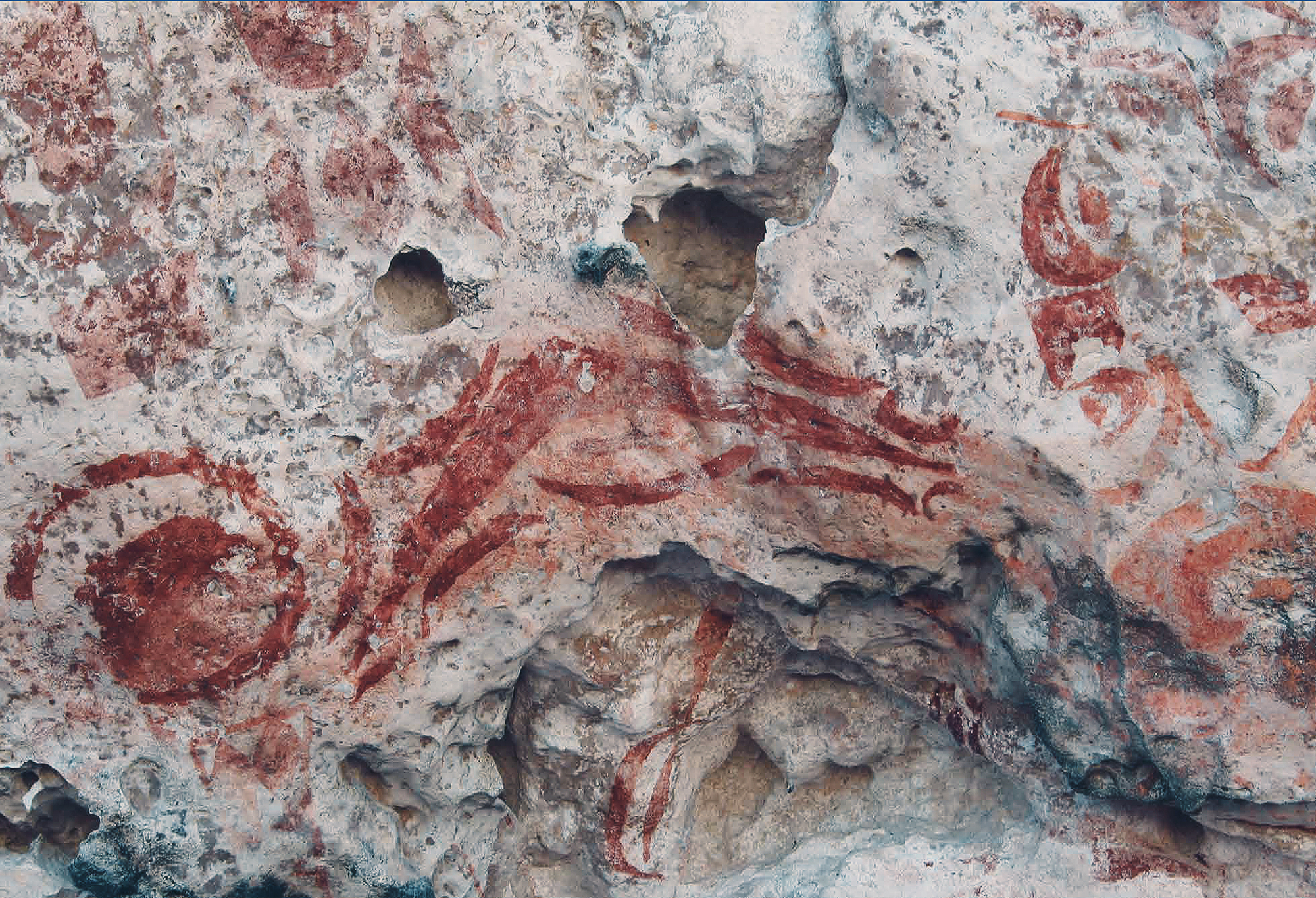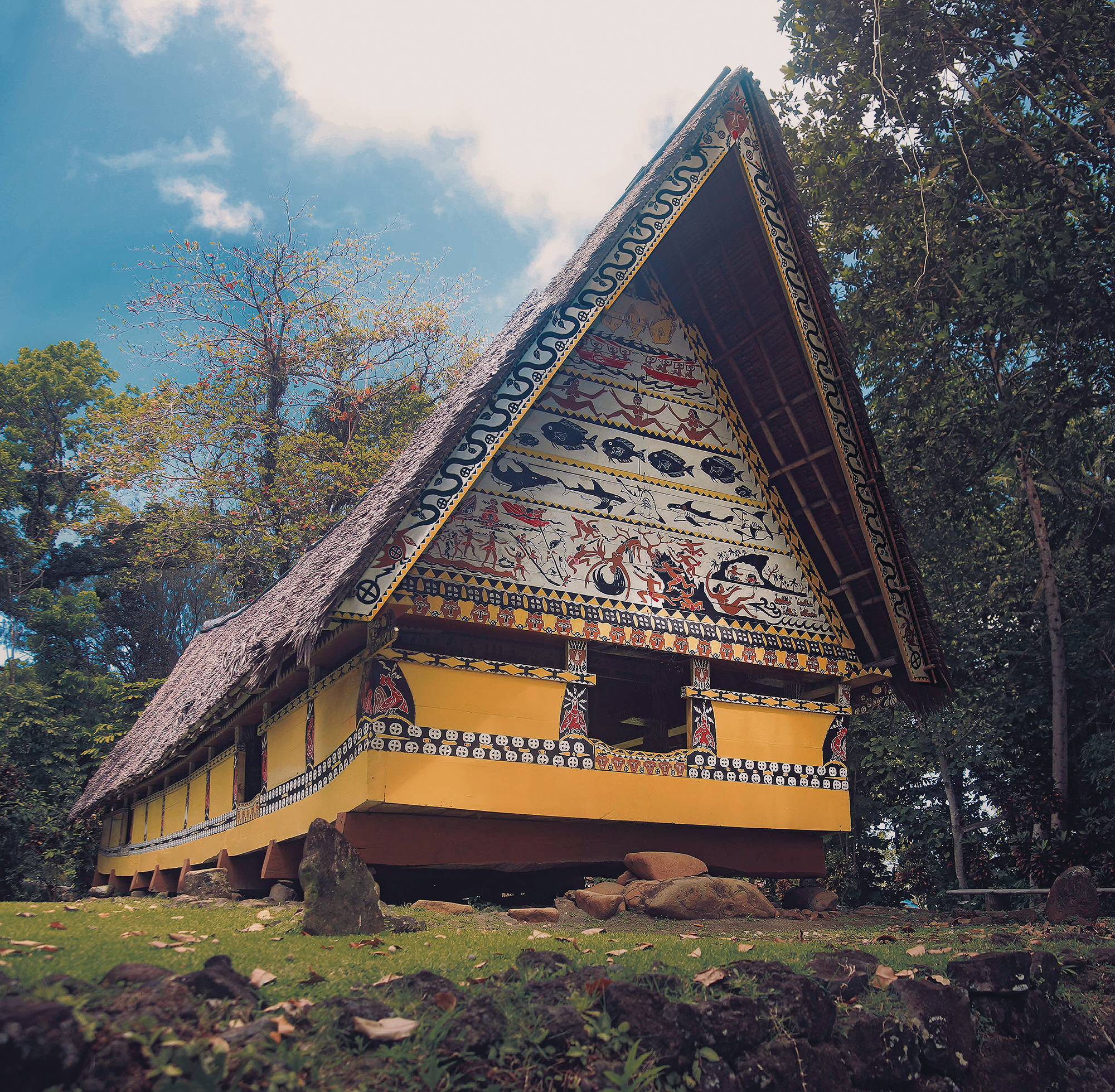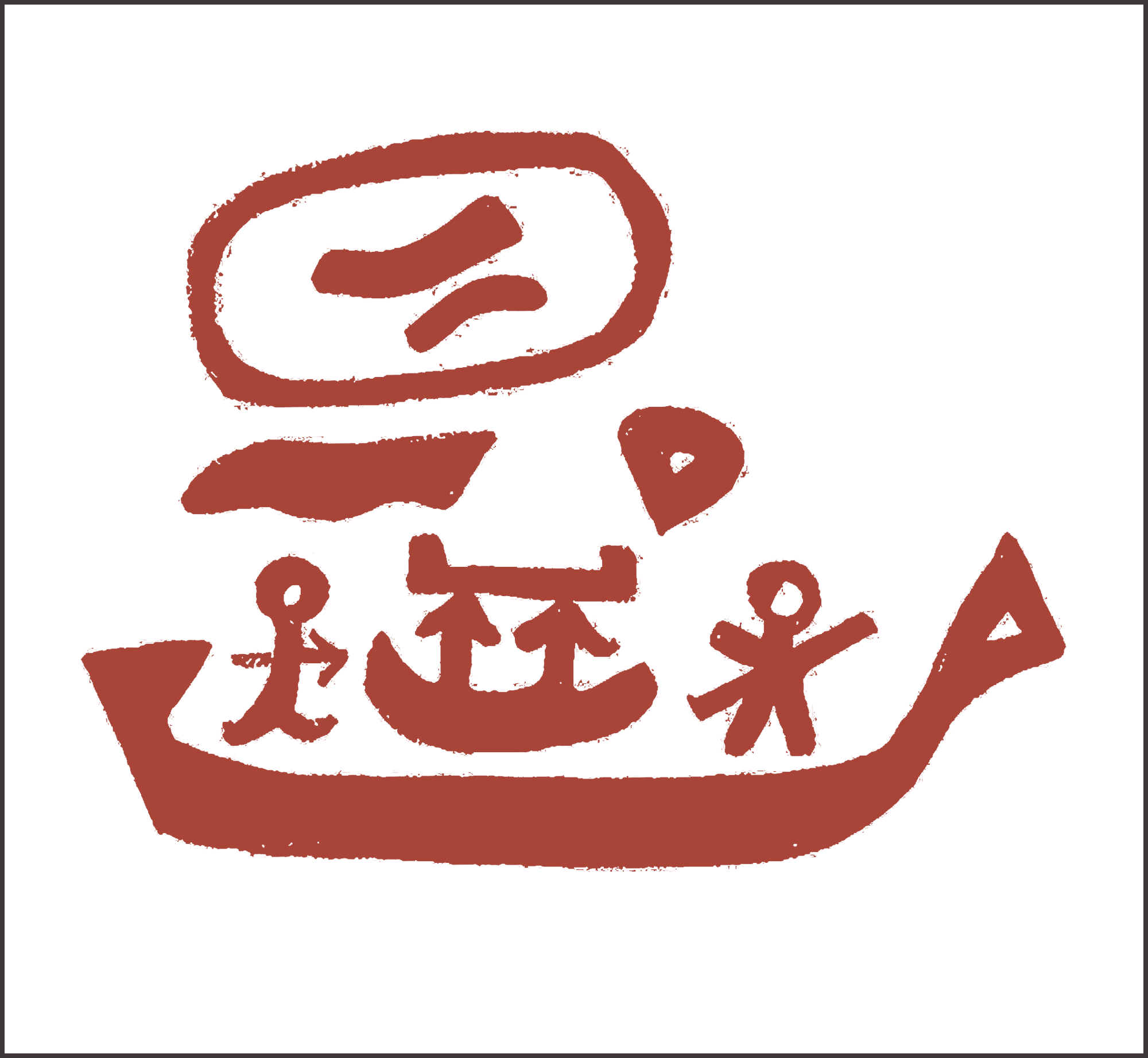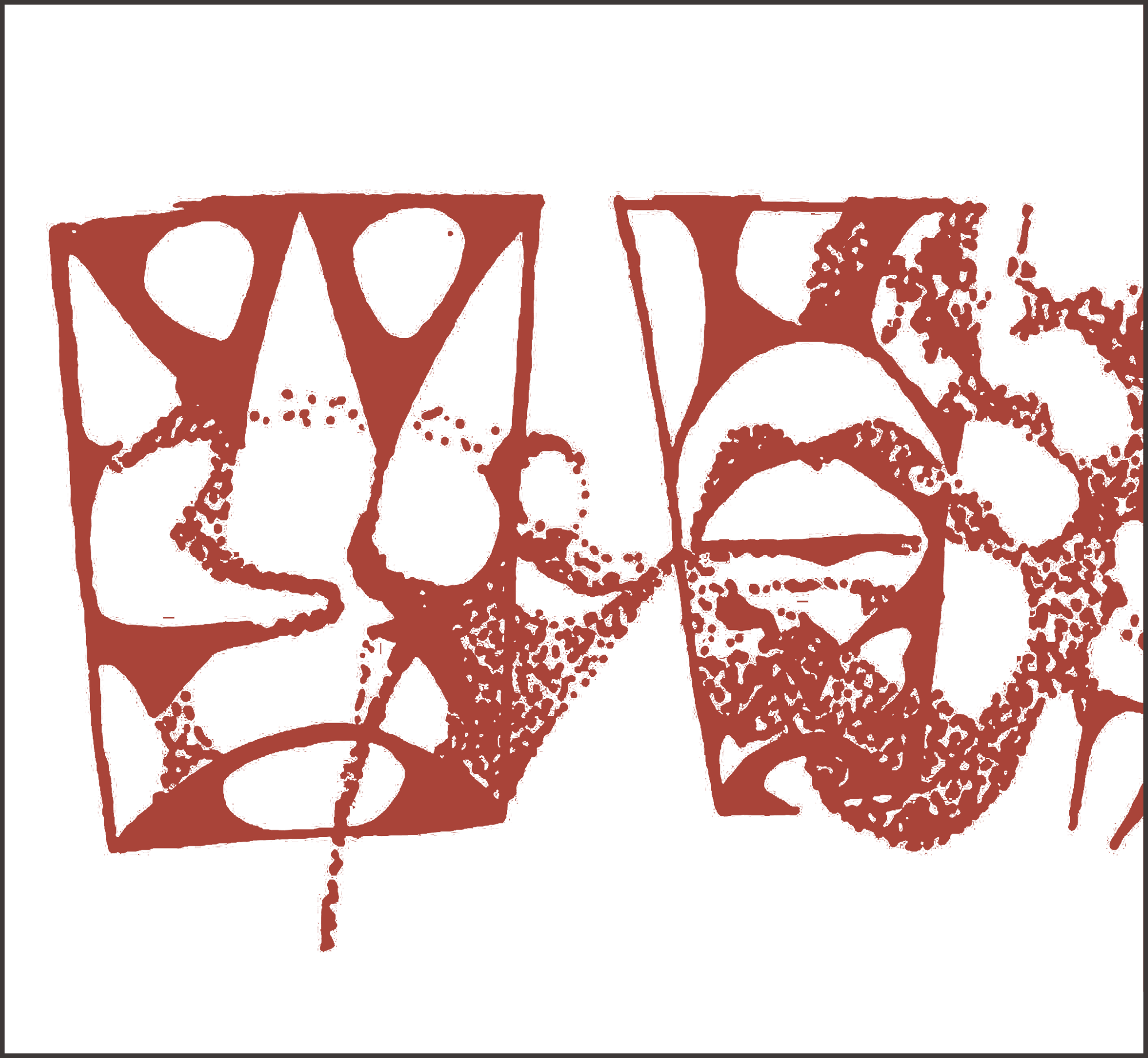
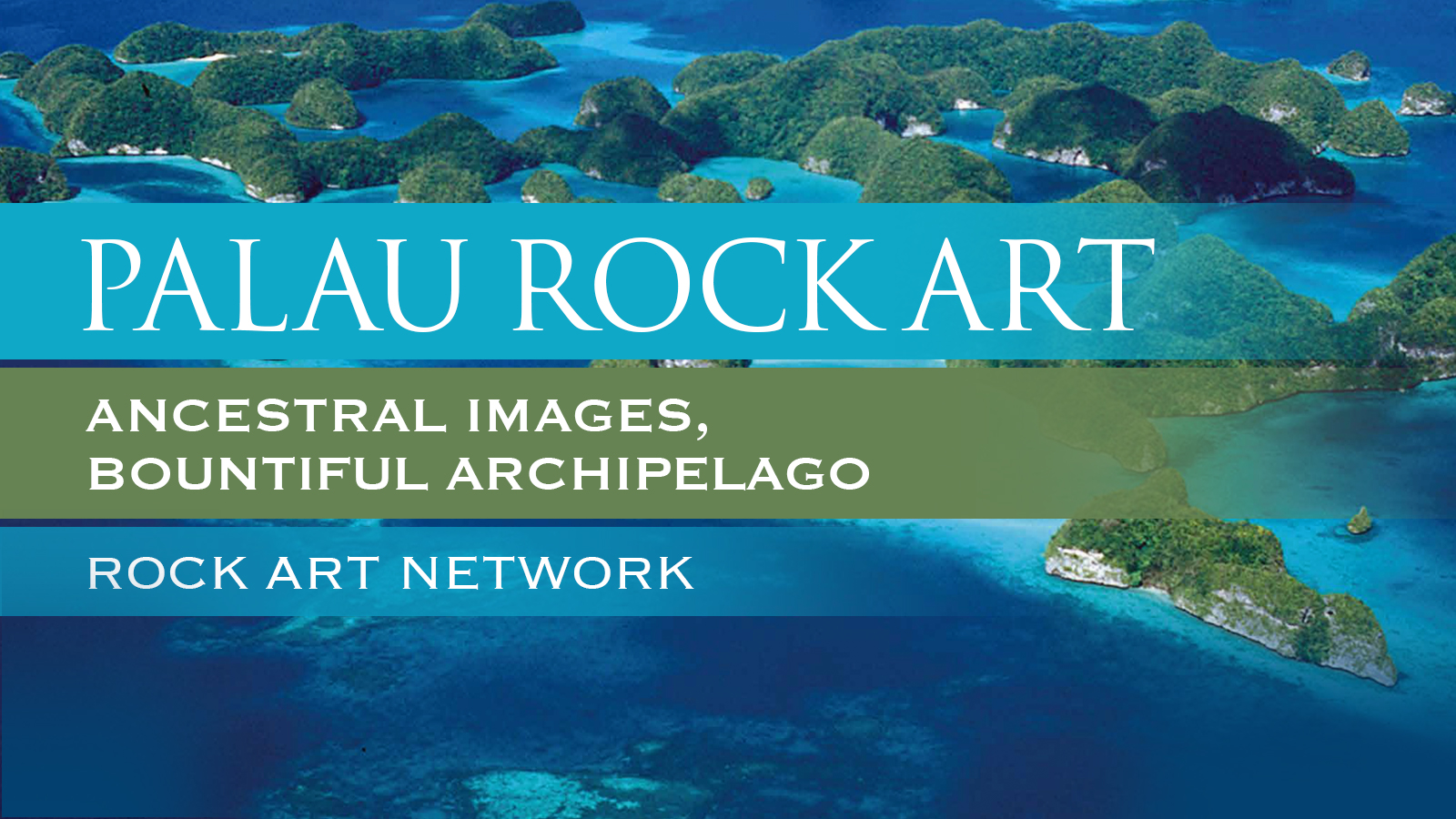
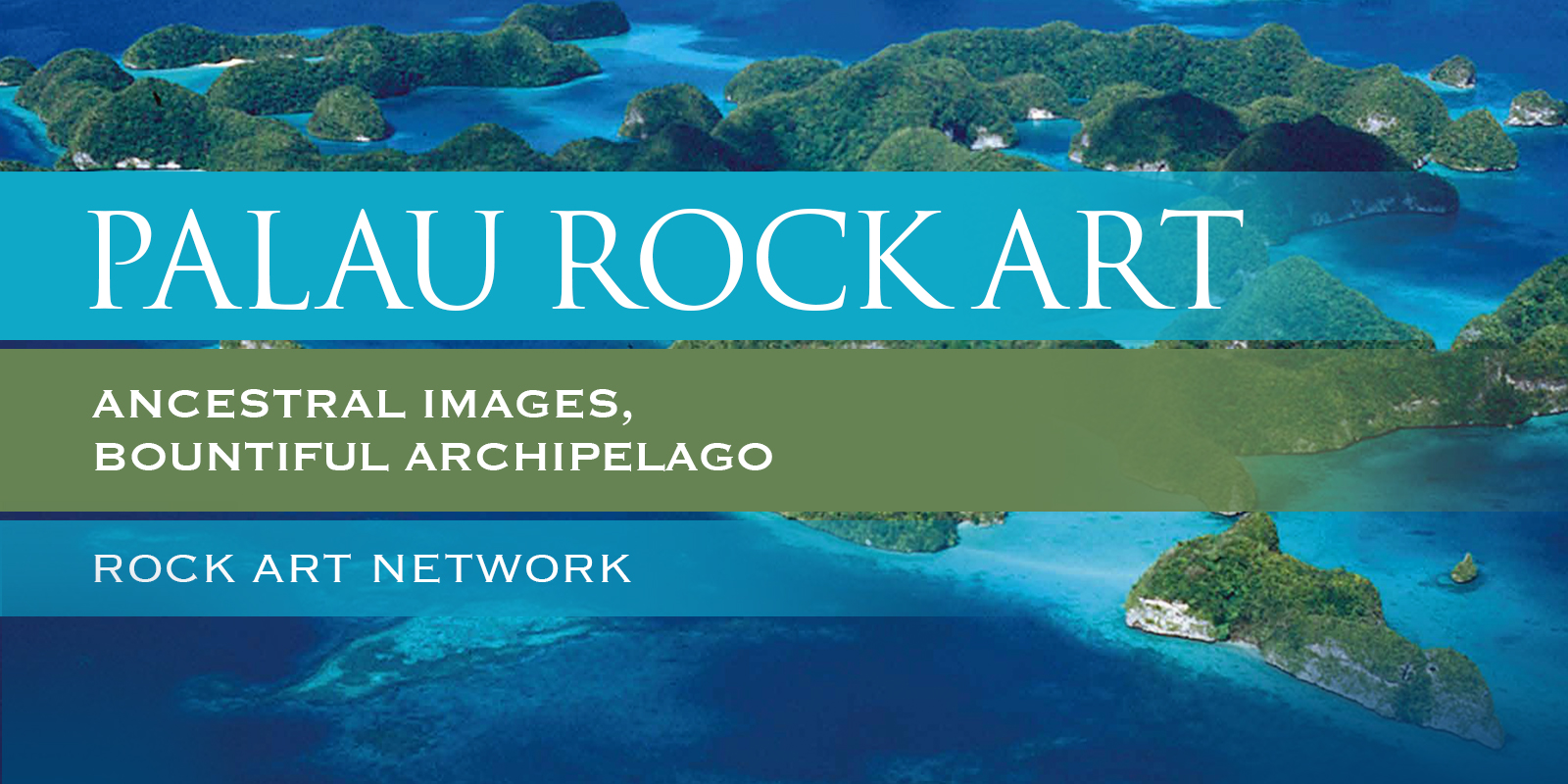

Pilar Fatás
Museo de Altamira
The roughly 480 coral and volcanic islands comprising the archipelago of Palau cover 466 square kilometers in the remote western Pacific Ocean. These tropical isles contain bountiful and storied land, sea, and skyscapes which roughly 18,000 people call home. Palau’s vibrant ancestral heritage and cultural traditions span 3,400 years of human settlement and habitation and remain strong to this day.


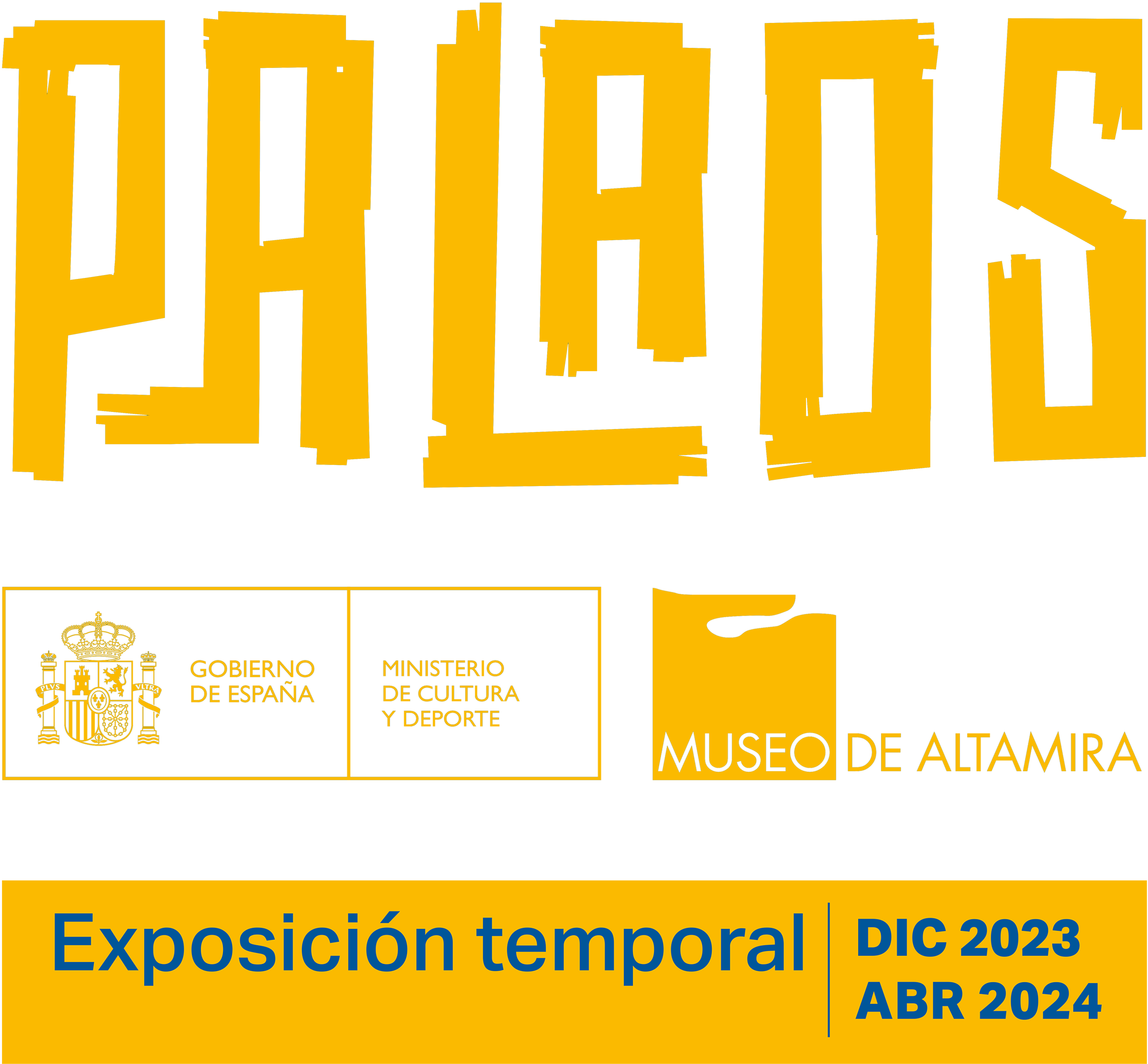
Pilar Fatás
Museo de Altamira
The roughly 480 coral and volcanic islands comprising the archipelago of Palau cover 466 square kilometers in the remote western Pacific Ocean. These tropical isles contain bountiful and storied land, sea, and skyscapes which roughly 18,000 people call home. Palau’s vibrant ancestral heritage and cultural traditions span 3,400 years of human settlement and habitation and remain strong to this day.
The currently uninhabited Rock Islands occupy a turquoise lagoon surrounded by a coral reef. This natural paradise sustains a diversity of native plants, birds, and marine life, and has the highest concentration of marine lakes in the world. Rock art as well as traditional villages and ancient agricultural, activity, and burial sites, are found throughout the World Heritage site. Palau’s ancient rock carvings and paintings are embedded in a richly storied cultural landscape where oral traditions are deeply valued by communities, youth and elders, throughout the archipelago. Within this context, Palau’s rock art represents ancestral knowledge, a symbolic language from long ago, and a unique cultural treasure.




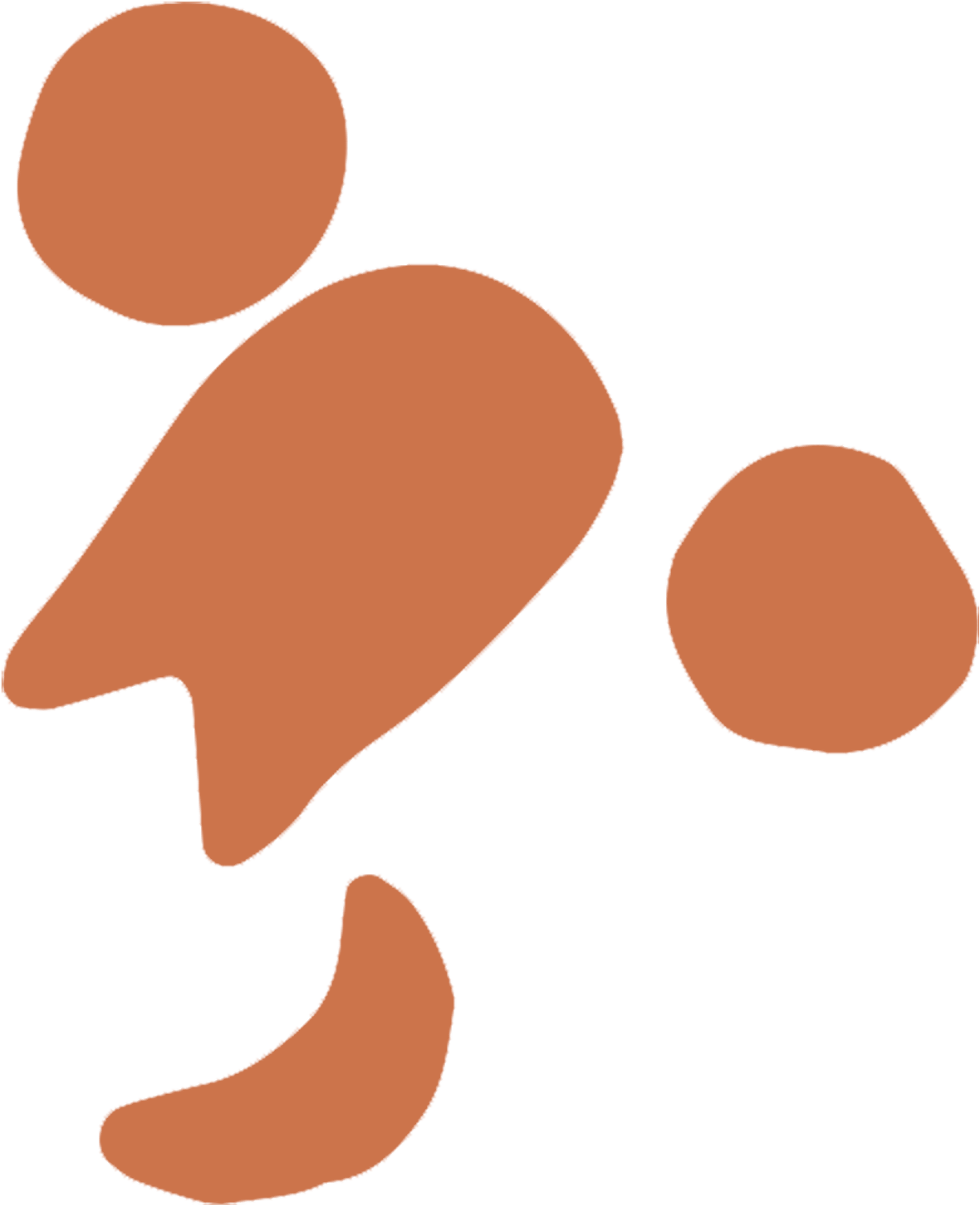
According to legend, four triangular figures carved onto a large boulder at Olebakelderau mark the burial of Surech’s headless body. A version of the story says that when a high chief requested to see Surech, presumably to take her as his wife, her lover Tulei showed the high chief only her severed head in order to avoid losing her.
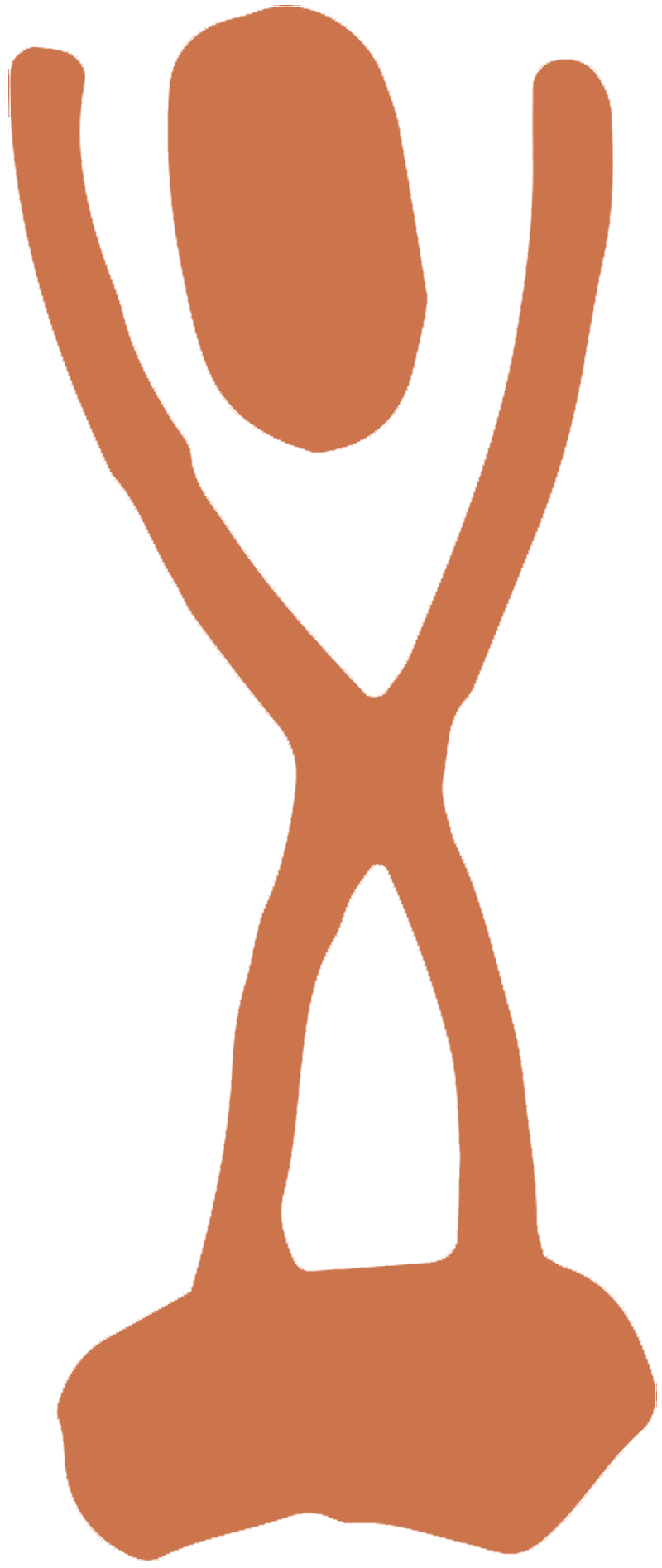
Orachl's final drawings, made just before he turned to stone, was the spectacular rock art on the island of Ulong. Except for the story shared above, there are no other known narratives about the rock paintings in Palau's extensive collection of legends and myths. Their purpose, meaning, and locations are perhaps forgotten or restricted sacred knowledge.

One confirmed and one potential rock carving site are located in the interior of the large volcanic island of Babeldaob. At the base of the Olebakelderau earthwork, four triangular forms are engraved onto the face of a large basalt boulder. A single faint linear human form that requires further investigation to verify may be incised into the rockshelter of Ii ra Ngebesek. Palau’s ten known rock painting sites are located 10 to 15 meters above the waterline in marine notches and cliff faces on seven Rock Islands. Ranging from several centimeters to a meter tall, paintings occur as single motifs, in panels, and, at Olechukl Ears Ulong, in a dense mural. The sites of Ulong and Taberrakl host the most elaborate assemblages.
Palau’s rock paintings were executed in red pigment; in a few instances yellow may also have been used. Paint application ranges from thickly-smudged to fine-lined. The most frequently-painted motifs are geometric, linear, and in-filled shapes and handprints, as well as spoked, rayed, and concentric circles. A few naturalistic paintings depict what appear to be boats, human-like forms, birds, fish, possible crocodiles, and reptile or paw prints.



Ochre and cheritem are not available on the limestone terrain of the Rock Islands and had to be transported, possibly through trade, from Palau’s volcanic islands. Those living on these northern islands could have carried the ingredients in their canoes as they traveled through the Rock Islands.
(Right) What appears to be a boat with birds on either end above abstract and geometric shapes at Taberrakl.
Many of the thick-lined images and abstract shapes could have been created with a blunt instrument like a finger. Fine-lined drawings and those with precise, neat edges may have been painted with a formal brush or other tool, such as a spathe of coconut fiber as told in the legend of Orachl. Stippled pigment application is present at Olechukl Ears Ulong.
(Below left) Interconnected four-sided, curvilinear motifs at Oimad Merach. (Below right) A human-like image with large round eyes wearing what might be a headpiece at Taberrakl. The shield-like figure, the rectangle containing curvy geometric shapes, is also painted at Olechukl Ears Ulong.


Palau’s painted and engraved rock art sites were intentionally situated within a greater storied cultural landscape. Palau’s confirmed rock engravings mark a storied place and anchor oral tradition to the cultural landscape. With the bright red designs painted on white limestone cliffs high above and facing the waters below, rock paintings were clearly visible to passing canoes or the spirits and gods of the air and sea.
Rock paintings may have been deliberately placed in difficult to access but easily visible locations. Most paintings are located in elevated marine notches, deep horizontal grooves caused by erosion. A few paintings are on sheer cliff faces that could only be reached with tools like rope ladders. Painting locations are somewhat distant from traditional villages and known activity areas.
Mentioned briefly in oral traditions, with no archaeological correlations and few known similarities to Palau’s surviving traditional designs, the symbolic meaning(s) of the painted rock art is currently a mystery. It may have served one or many cultural purposes, functions, and meanings. Since most painted sites display their own distinct designs, each location may tell a unique story.
Initial studies show little similarity between the rock paintings and traditional artwork pictured in the ethnohistoric record, such as the paintings on the bai, even though both are traditionally identified as Orachl’s drawings. These long-term changes in symbolic designs may relate to the passage of time and an evolving society.


Olechukl Ears Ulong’s stylized and diverse designs are generally well-preserved and exhibit greater artistic attention - e.g., finer precision, design, and composition - than Palau’s other rock painting sites. The mostly geometric or curvileaner images are often combined to create complex patterns. Figurative images include animal prints, several fish, humanoid faces, and four highly stylized anthropomorphs.
Only at Olechukl Ears Ulong are a relatively small number of paintings hidden from view within an adjoining rock shelter complex. Also, at Ulong, at least two red pigmented images are overlain by an unknown yellow substance, which may represent a later episode of rock art creation with yellow pigment or result from weathering, fungus, or another natural phenomenon.


The absence of stories related to the rock paintings in Palau’s extensive body of cherished myths, legends, and customary practices directly related to the Rock Islands, implies their meanings may be long forgotten or perhaps the paintings contain restricted knowledge. In another illusion to their antiquity, Palau’s rock paintings are stylistically different from surviving artistic heritage.


Palau’s rock paintings embody many APT characteristics: the use of red pigment, many motif styles, and location in difficult to access yet highly visible cliffs overlooking the sea. Missing in Palau is the APT’s characteristic archaeological or ethnographic association of rock paintings with human burial activities. Some Palauan motifs are not found in the APT, indicating that that over time Palauan settlers developed their own painting style.
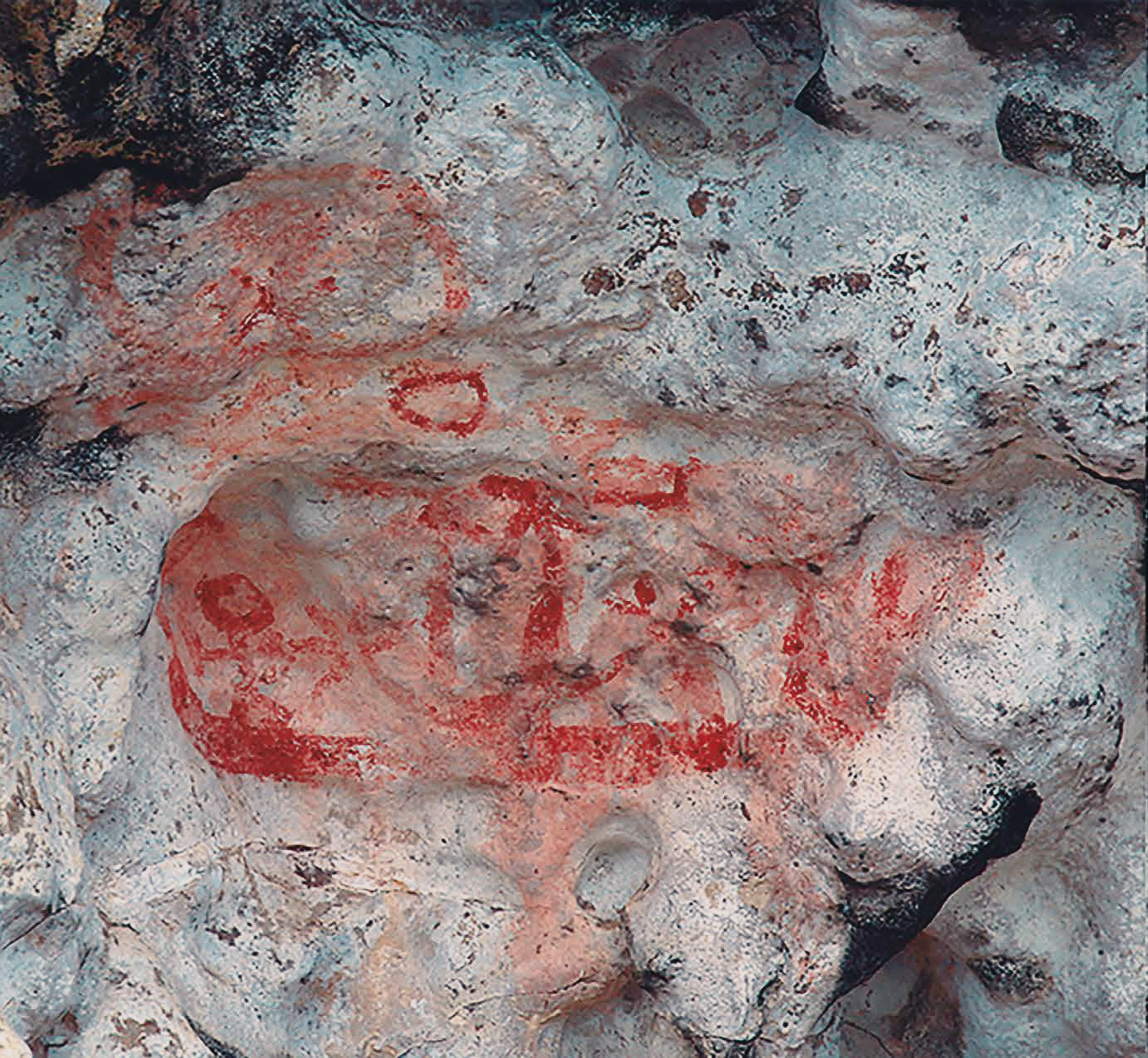

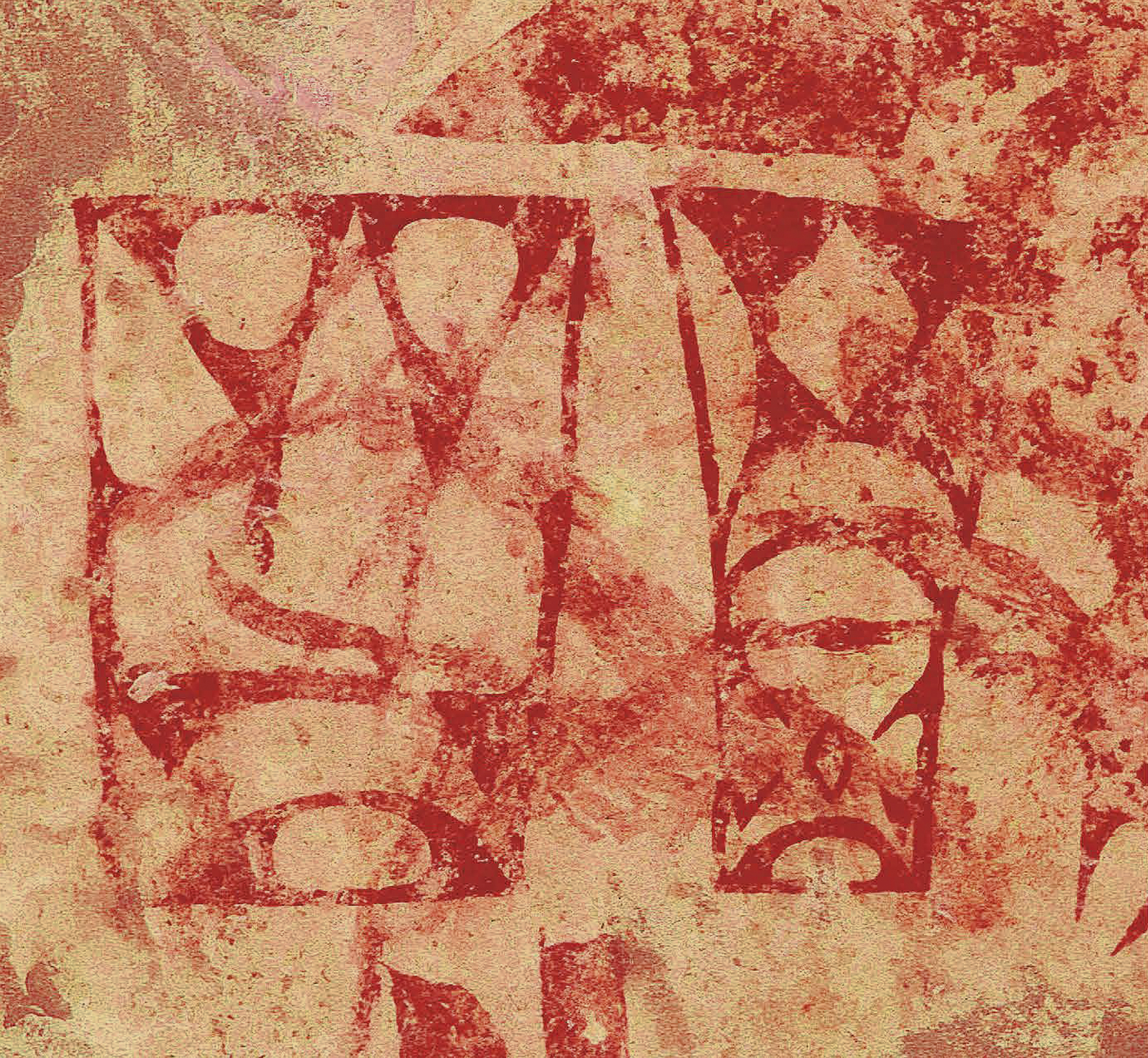



Museo Nacional y Centro de Investigación de Altamira
Subdirección General de Museos Estatales
Ministerio de Cultura y Deporte
Belau National Museum
Ministry of Human Resources, Culture, Tourism and Development of the Republic of Palau
Subdirección General de Gestión y Coordinación de Bienes Culturales
Ministerio de Cultura y Deporte
The contents of this exhibition have been produced collaboratively. The generous assistance and information provided by esteemed community informants Dirrengulbai Sariang Timulch of Palau’s Society of Historians and Kautechang Vince Blaiyok a member of Palau’s Historical and Cultural Advisory Board, Pat Colin, Alex Ferrier-Loh, Rachel Hoerman, Jolie Liston, Sylvia Kloulubak, Ron Leidich, Jess Merrill, Pia Morei, Macstyl O. Sasao, Kiblas Soaladaob, Mark Willis, and the capable and knowledgeable staff and crew of Paddling Palau made this content possible.
Pilar Fatás y Sofía Cuadrado (Museo de Altamira)
NEXO
→ Members and affiliated institutions of the Rock Art Network
by
George Nash
5/09/2024 Recent Articles
→ Sigubudu: Paintings of people with guns in the northern uKhahlamba-Drakensberg
by Aron Mazel
22/07/2024
by Richard Kuba
13/06/2024
by Meenakshi Dubey-Pathak
8/03/2024
by Rock Art Network
6/02/2024
by Rock Art Network
14/12/2023
by Sam Challis
5/12/2023
by Aron Mazel
30/11/2023
by Sam Challis
21/11/2023
by Sam Challis
15/11/2023
by Sam Challis
10/11/2023
by Rock Art Network
6/11/2023
by Rock Art Network
3/11/2023
by Aron Mazel
2/11/2023
by Meenakshi Dubey-Pathak
26/09/2023
by Paul Taçon
24/08/2023
by Aron Mazel
13/06/2023
by Paul Taçon
5/06/2023
by Paul Taçon
15/03/2023
by George Nash
14/03/2023
by Noel Hidalgo Tan
10/02/2023
by George Nash
01/02/2023
by Meenakshi Dubey-Pathak, Pilar Fatás Monforte
29/11/2022
by Aron Mazel, George Nash
21/09/2022
by Paul S.C. Taçon, Sally K. May, Ursula K. Frederick, Jo McDonald
07/07/2022
by Meenakshi Dubey-Pathak
26/07/2022
by Paul Taçon
20/07/2022
by David Coulson
16 June 2022
by Paul Taçon
25 April 2022
by Noel Hidalgo Tan
20 April 2022
by Meenakshi Dubey-Pathak
14 March 2022
by Carolyn Boyd & Pilar Fatás
02 March 2022
by David Coulson
07 February 2022
by Johannes H. N. Loubser
06 February 2022
by Meenakshi Dubey-Pathak
05 February 2022
by Aron Mazel
28 January 2022
by Aron Mazel
8 September 2021
by David Coulson
17 August 2021
by Ffion Reynolds
21 June 2021


by Aron Mazel
22/07/2024
by Richard Kuba
13/06/2024
by Meenakshi Dubey-Pathak
8/03/2024
by Rock Art Network
6/02/2024
by Rock Art Network
14/12/2023
by Sam Challis
5/12/2023
by Aron Mazel
30/11/2023
by Sam Challis
21/11/2023
by Sam Challis
15/11/2023
by Sam Challis
10/11/2023
by Rock Art Network
6/11/2023
by Rock Art Network
3/11/2023
by Aron Mazel
2/11/2023
by Meenakshi Dubey-Pathak
26/09/2023
by Paul Taçon
24/08/2023
by Aron Mazel
13/06/2023
by Paul Taçon
5/06/2023
by Paul Taçon
15/03/2023
by George Nash
14/03/2023
by Noel Hidalgo Tan
10/02/2023
by George Nash
01/02/2023
by Meenakshi Dubey-Pathak, Pilar Fatás Monforte
29/11/2022
by Aron Mazel, George Nash
21/09/2022
by Paul S.C. Taçon, Sally K. May, Ursula K. Frederick, Jo McDonald
07/07/2022
by Meenakshi Dubey-Pathak
26/07/2022
by Paul Taçon
20/07/2022
by David Coulson
16 June 2022
by Paul Taçon
25 April 2022
by Noel Hidalgo Tan
20 April 2022
by Meenakshi Dubey-Pathak
14 March 2022
by Carolyn Boyd & Pilar Fatás
02 March 2022
by David Coulson
07 February 2022
by Johannes H. N. Loubser
06 February 2022
by Meenakshi Dubey-Pathak
05 February 2022
by Aron Mazel
28 January 2022
by Aron Mazel
8 September 2021
by David Coulson
17 August 2021
by Ffion Reynolds
21 June 2021
Friend of the Foundation


by Aron Mazel
22/07/2024
by Richard Kuba
13/06/2024
by Meenakshi Dubey-Pathak
8/03/2024
by Rock Art Network
6/02/2024
by Rock Art Network
14/12/2023
by Sam Challis
5/12/2023
by Aron Mazel
30/11/2023
by Sam Challis
21/11/2023
by Sam Challis
15/11/2023
by Sam Challis
10/11/2023
by Rock Art Network
6/11/2023
by Rock Art Network
3/11/2023
by Aron Mazel
2/11/2023
by Meenakshi Dubey-Pathak
26/09/2023
by Paul Taçon
24/08/2023
by Aron Mazel
13/06/2023
by Paul Taçon
5/06/2023
by Paul Taçon
15/03/2023
by George Nash
14/03/2023
by Noel Hidalgo Tan
10/02/2023
by George Nash
01/02/2023
by Meenakshi Dubey-Pathak, Pilar Fatás Monforte
29/11/2022
by Aron Mazel, George Nash
21/09/2022
by Paul S.C. Taçon, Sally K. May, Ursula K. Frederick, Jo McDonald
07/07/2022
by Meenakshi Dubey-Pathak
26/07/2022
by Paul Taçon
20/07/2022
by David Coulson
16 June 2022
by Paul Taçon
25 April 2022
by Noel Hidalgo Tan
20 April 2022
by Meenakshi Dubey-Pathak
14 March 2022
by Carolyn Boyd & Pilar Fatás
02 March 2022
by David Coulson
07 February 2022
by Johannes H. N. Loubser
06 February 2022
by Meenakshi Dubey-Pathak
05 February 2022
by Aron Mazel
28 January 2022
by Aron Mazel
8 September 2021
by David Coulson
17 August 2021
by Ffion Reynolds
21 June 2021
Friend of the Foundation

